#fundamental elements of queer theory
Explore tagged Tumblr posts
Note
queer icon majima is very strange to me DS actually really gets into how he views gender overall so it's weird ? lol
literally so true. a LOT of rambling under the cut because i have sooo many thoughts about majima's queerness and its portrayal in the games. youve opened a whole can of worms with this one
majima could not be a queer icon if his life depended on it i will die on this hill. even if he came out or even if she transitioned or Anything like his worldview and politics are so fundamentally conservative on so many crucial points and hes literally so repressed about sexuality like he could never. he could neverrrrrrrr. he needs to hashtag liberate your mind and stop basing his entire mental model of society and human relationships on The Nuclear Family and honestly completely revolutionize his thinking before he can even begin to take any of the steps necessary to becoming anything resembling a queer icon, or in fact a queer person capable of inspiring and being a positive example for literally anyone*. bro did drag once and it was with the full intention of getting hatecrimed so he'd have an excuse to get into a fight with a man he ASSUMED would be transphobic and he thinks its "demeaning" and "funny" for men to crossdress like give me a breakkkkkk. assigning him 1000 hours in the forcefem dungeon
if im being completely real with you i dont think his understanding of sexuality ever Really went beyond "romantic love is something that happens between a man and a woman" to begin with. i am however planning to use this against him in my fic but i really do think the best we're getting with majima is like. "in a queer romantic relationship but deeply heteronormative about it" im afraid. and the sad thing is he literally cant Afford to move past this even if he wanted to because the position he has situated himself in in society is an active, material obstacle to this, in some ways even more than heternormative society is for queer people in general, because hes responsible for so many people who depend on him. this is how the patriarchy (or any oppressive systemic structure) works, this is why people don't question things; there are real, material consequences to "realizing" things about yourself and society, and to revolutionizing your thinking, and the system is designed that way on purpose. majima is not in a place where he has a strong incentive to do so, the risks far outweigh the benefits for him, and he has so many coping mechanisms set in place to prevent him from looking at mirrors (wow, i wonder why that is !)
also look at how he acts with civilians vs. other yakuza. the ds substory with daigo is him treating a fellow yakuza (outranking him!) this way but the is way more open minded about "unconventional" sexuality when it comes to civilians and women -- first example that comes to mind is kaho (minato girl) from pirates, but he also displays generally open minded attitudes about gender identity and presentation in that game on other occasions. he was even like this in y0, his hostess conversations have plenty of examples of him not subscribing to social norms especially in things like "gender equality". what i mean to say is i think him being in the yakuza IS the biggest obstacle to majima developing a healthier, queerer outlook on sexuality and gender. because its structure is so fundamentally patriarchal that misogyny, transphobia, homohpobia necessarily characterize the bonds between its members. him treating daigo the way he did in that substory is an example of this, but i dont think he would approach a civilian the same way. the yakuza is interesting in this way because it creates a patriarchy within a patriarchy -- like, we do often see this behavior between men who are regular civilians, where daigo and majima couldve been any two guys you know, because its the rules of the "club" -- the social club that is "manhood" as patriarchal society defines it. but the way yakuza place themselves Above civil society creates a different, more exclusive club and it has the same rules, and this means they are not exactly in the same social class as civilian men. so i do think majima might be more open minded re: civilian queer people in general, which is an interesting cognitive dissonance
not that there havent been queer icons who were FAR from being paragons of socially progressive thinking btw (plenty!! thanks to how rampant misogyny is even in queer spaces) but if we're talking about whether or not he would "deserve" the title of "queer icon".... *like i understand majima has helped many many rgg fans come to terms with their own transness, but i think its important not to project our own political beliefs and worldviews onto characters who frankly just. do not share them. reminder that majima is, CANONICALLY, a cis man who was born in ✨1964✨ who divorced his 18 year old wife after hitting her because she ABORTED HIS BABY. he thinks getting het married and having kids is like, the pinnacle of human happiness, forever inaccessible to him -- or he at least believes that's a morally correct thing to believe, but his double standards on this go SO deep that i Have to read it as internalized shame on his part. the cognitive dissonance is insane. you do NOT want to be het married with kids! its just a "dream" hes been sold that he couldnt really let go of because theres nothing else to replace it. because. again. cant afford to come to terms with his queerness
and while im at it i do think a lot of the fandoms revering goromi as some kind of like... paragon of transfem visibility or something (yes, even some of the people who just read this and went "well i definitely dont do that!") is also a result of this "projection" because theyre assuming majima is doing things in a way they personally find agreeable or understandable. but the fact of the matter is that goromi IS a transmisogynistic caricature, and even if shes the transmisogynistic caricature of the writers, technically, she is also majima's as far as in-universe analysis goes. it was not an exploration of gender in good faith on his part at all, and i really do think the fandom's unquestioning treatment of her (and majima) as a "queer icon" is nothing more than transphobia and homophobia and misogyny coming from the queer community itself, which, unfortunately, happens all the time. this is not meant to shit on anyone btw but i do urge everyone to not uncritically accept portrayals of queerness in media -- just because *you* have progressive ideas and can read things from that lens doesn't mean the majority of the people who engage with the same source material will, or that it was intended to be read that way. for most fans, a lot of the portrayals of queerness in rgg will do nothing more than reinforce pre-existing transphobic (especially transmisogynistic!) and homophobic attitudes of the audience. sure, you CAN read everything majima does in a way that *would* qualify him as a queer icon, but also, like, what if the world was made of pudding?
#if i sound pissed off at majima about this btw its bc i am <3#killing him with hammers#ITS OKAY. HE WAS BORN IN 1964. ITS NOT HIS FAULT.#IM GOING TO HELP HIM...........#i will say this in his defense he is surprisingly not bioessentialist in ways youd expect him to be#and the fact that he understands all identity is social and performative does enable him to like. implicitly understand some#fundamental elements of queer theory#but. yeah#asks#also anon i remember BARELY ANYTHING about dead souls so if it went into majimas thoughts on gender “overall” i definitely dont remember#if anyone wants to remind me id be grateful#UNLESS YOU MEAN HIS CONVOS WITH SAAYA. IN WHICH CASE. I AM FAMILIAR GODBLESS......
20 notes
·
View notes
Text
some queer and misc. analysis of trish una
im not sure if everyone saw my addition on this post here proposing the theory that bucciarati is a "parental" character in a non-traditional and queer sense, but i wanted to continue that discussion by talking about trish now.. since to me, she has what could be described as araki's first attempt at a true character arc for a female character, who simultaneously has elements that read like queer self-actualization that we watch unfold throughout the story.
for the purposes of this analysis, what is important to recognize about trish's introduction is how she is figuratively (team bucciaratis mission to protect her will get them closer to giorno/bucciaratis goals) and literally (his only known relative and identifiable factor at the start) linked to her father; she loses her mother (loving supportive family), is thrust into a horrifying world out to harm her for factors beyond her control, and is expected to blindly trust her father and by extension his men assigned to protect her. its no wonder she is so guarded, but my point here is how this establishes trish as starting off vulnerable and uncertain of the world she's inadvertently embroiled in beyond her safe upbringing with her mother.
nevertheless, trish is repeatedly described as having the willpower to figure these things out for her own sake, and a tenacity for these frightening events (la squadra's attacks) beyond that on the average person. both giorno and abbacchio mention it at different points (although abbacchios line is changed to narancias in the anime).

perhaps the most notable early example of her gumption is what she first says at the end of the grateful dead/beach boy fight. although bucciarati is not at liberty to answer her questions about both why she is being attacked, and also what the truth about these strange powers are.

however, id argue this is in line with what has been previously established for bucciarati's character to say; that it is up to trish herself to determine what these things mean, especially if they are related to her intrinsic identity.
this continues once they arrive in venice at the church, where we get to see trish's human vulnerability and fear. something i find particularly interesting is that, above all else, she is afraid of the uncertainty about what her father will be like and her personal fate.
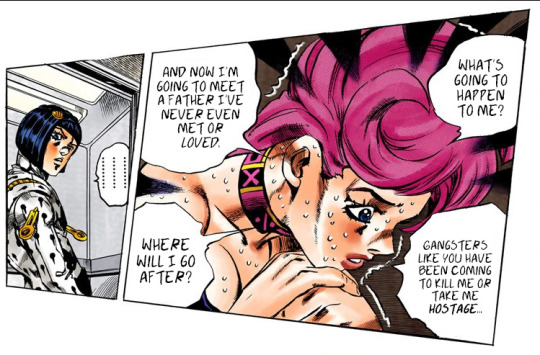
this was one of the original things i wanted to talk about under a queer reading; for a queer person to come out to their family, there sometimes may be a concern about alienation of self. that is, coming out may, figuratively and literally, feel like you are revealing an entire side or life you live that they know nothing about. it may be about seeking approval from those who are, in many cases, a major part of life and your upbringing; she wants this week from hell to be over so she can return to some semblance of normalcy as herself, and her father is her only hope for this then.
something of particular note that bucciarati responds with is the probability that she will be given an entire new identity and forced to uproot even further, separated in even her most fundamental identity from the life she once led for the sake of her fathers comfort. even before the horrific reception her father gives her, trishs chances of being accepted as she is and loved are poor, a matter that might be incredibly common for people who try to express who they really are to unwelcoming families.

in trishs case, diavolo has literally never met her at all in any capacity, nor was he present in her upbringing; there is an extra factor of blind faith she must put into him. but he is the only biological "family" shes got; we will talk about nontraditional families and team bucciarati in a moment.
for this reason, bucciarati assures her (whether it is of his own doomed naivety or something else entirely) that a family will love you no matter what, because thats what they do. its a value that, up until that next moment, was something he himself had complete faith in.
as the rest of this arc shows though, that wasnt the case for trish, and never would be.

the events at san giorgio are the turning point for the entirety of vento aureo, with trish at the center of it all. and while this analysis is focused on trish, i wanted to include how it is also an earth-shattering moment for bucciarati, now faced with the culminating reality that the boss never gave a shit about family in the first place, and was only after his selfish desire to be unknowable. his attempted murder of his innocent civilian daughter invokes, to me, the needless cruelty some unaccepting families may have towards their children upon coming out or other realization that their child is both related to them, but not in a way they deem acceptable.
while it is laid out rather straightforwardly, this needless cruelty from biological family is relatable enough to change narancias mind and follow bucciarati after he betrays the gang; cementing once more that the only bonds of trust these characters have are with one another, since not even their biological families will care for them, let alone society.


at the restaurant in venice, narancia is still fearful about how trish will receive this absolute rejection, but her reception is surprisingly determined.
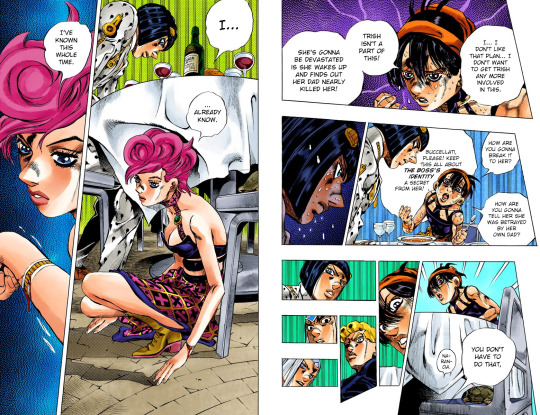
in the past, ive seen this scene used as the real point where trish as a female character finally comes into her own as a person, but as we previously established, she really had it in her all along, and it was only put to the test then (more on her innate courage in a moment).
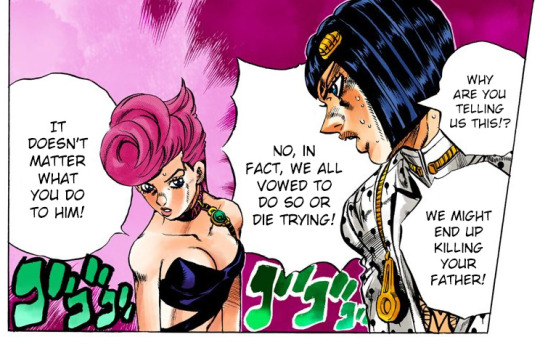
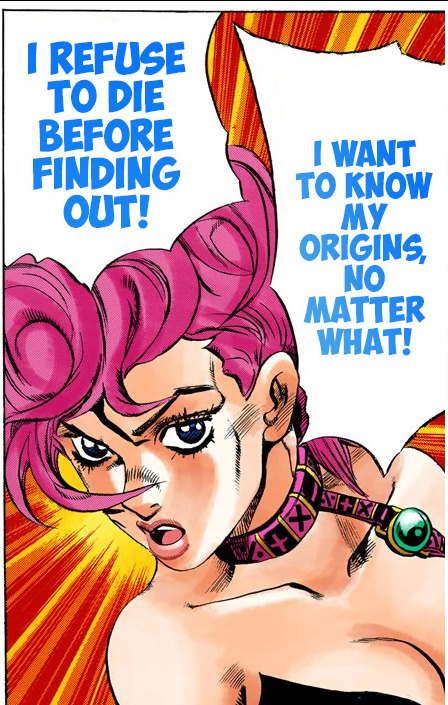
trish, like the rest of team bucciarati, has no choice but to persist as she is, to exist as her own person even if all the odds are against her. not only this, but she tentatively decides to join in bucciaratis cause, a move that she explains as just to find her own origins or die trying. at this point, her motive might be concerned only with herself, but throughout the notorious BIG fight, that matter changes.
aboard the plane to sardinia, trish grapples with the willingness of team bucciarati to pursue diavolo, even after they no longer are required to protect her. i would say this is when she begins to feel comradery with the team and their cause to exist boldly in the face of someone all-powerful (diavolo) who wishes they were dead, rather than just being someone or something reduced to a secondary role (although how shes treated after this fight is another story...)
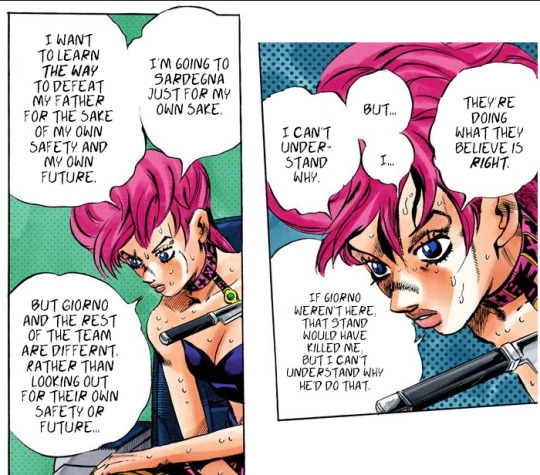
the moment trish realizes that she alone can save giorno (and therefore, the entirety of the team), she is struck with the final dilemma of whether or not she wants to get involved with all of these things on the front lines. she decides she does, without being fully conscious of it, because of the courage now awakened and manifested in-full as her stand, spice girl.
spice girl is unique as a stand for being one of the few that seems to have her own consciousness, although it really is a part of trishs consciousness that was always a part of her, now fully realized in literal, physical form.

the courage required for her stand to now fully manifest was in her all along, and under a queer lens this could be likened to a person now being able to live authentically as they are, the incongruity mostly solved now that she has grown as a person and has a (support) group/system of those who have had similar experiences.
notorious BIG concludes with trish delivering her own beatdown and saving all of the team, seeming to fully cement her as a force to be reckoned with within the jojo universe and her nuanced personhood that had been building this entire time.

all this in mind, this isnt to say that trish's character doesnt feel stunted by araki after this point, for no other reason than misogyny. her destruction rank-A level stand and fighting prowess is forgotten after they arrive in sardinia, and during the green day/oasis fight she is conveniently relegated to the caretaker position for narancia, even if giorno is the "healer" and her own stand stronger than his in combat. i would argue the biggest injustice towards trish as a fully fledged character was the enforcement of these stereotypically feminine roles on a character who, as weve just discussed, has learned to be confident, courageous, and unapologetically herself throughout the entirety of vento aureo.
when i first set out to write this post, i was concerned with talking about trish from an almost entirely queer angle. it evolved, then, into something much more full-bodied, with that being simply one lens you can apply to her character arc.
id love to discuss these things (and the stuff in my bucciarati analysis) at greater lengths, and also want to say that despite writing this over a period of time, i may have messed up my wording or made points that seem like reaches... none of this is meant to speak for the experiences of any real person, and are rather generalizations. i hope that regardless of these things, more people can see vento aureo for the narrative value i really think it has, especially to the queer fanbase who, including myself, may relate heavily to the subtextual experiences depicted.
special thanks to @fur-bee for going through this with me and giving me key insights and for my other friends to proofread and such :D
#trish una#vento aureo#jjba#writing#queer analysis#idk what to tag as... hmm lots of thoughts here#also sorry some panels have a black line at the top? my screenshot program does that sometimes
131 notes
·
View notes
Text
Reading the (Visual) Rainbow 101
Lesson 2 - Colors
Because I get so many asks about colors, I decided the best way to celebrate Pride is to educate anyone who is interested in how to better Read the (Visual) Rainbow and simultaneously allow myself to appreciate queer media.
Ready to go on a colorful adventure?

There are two groups of knowledge regarding colors: Color Theory and Color Psychology.
Color Theory <- I don't do this
Color Theory is a core element of art. It has three fundamental components: the Color Wheel, color harmony, and color use. The basic purpose of Color Theory is to determine which colors are best for which visual situation based on color mixing and color combination.
The Basics
There are twelve colors on the Color Wheel
There are three Primary Colors - Red, Yellow, Blue
Every color is a mix of these three colors
The three Secondary Colors are created from the three Primary Colors: Orange (Yellow + Red), Green (Yellow + Blue), Purple (Red +Blue)
The six Tertiary Colors are a mix of a Primary Color and a Secondary Color. They have various names, but these are the basic names: Orange-Red, Yellow-Orange, , Yellow-Green, Blue-Green, Blue-Purple, Red-Purple.
Warm Colors are Red, Orange, Yellow. These are also known as Advancing Colors.
Cool Colors are Blue, Green, Purple. These are also known as Receding Colors.
This is a basic Color Wheel.

The Next Level
Each color has four hues on the Color Wheel
The first hue is the main color we saw above.
The next hue is a Tint. This is the main color mixed with white.
The third hue is a Tone. This is the main color mixed with grey.
The final hue is a Shade. This is the main color mixed with black.
This is an advanced Color Wheel.
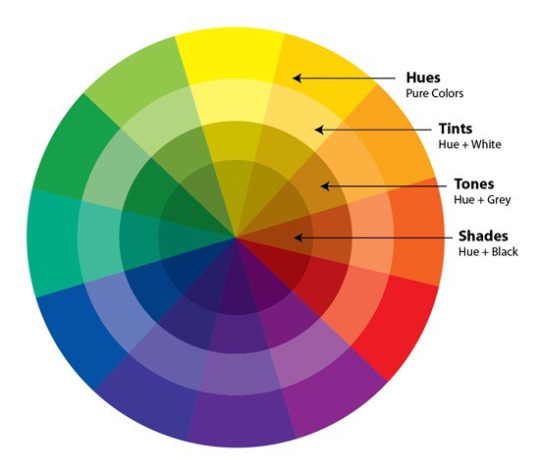
What about Black and White?
In Color Theory, Black is the absence of color, and White is all the colors.
Color Psychology <- I kind of do this
Color Psychology is the study of colors in connection to human's emotions and behaviors. Carl Jung, the most prominent psychologist to develop modern-day color research, believed that people's personalities were connected to four colors: blue, red, yellow, green. Those colors were the basis for everyone's personality, but some people were more of one color depending on the situation. He also believed there were negatives and positives to each color.
These are the basic color personalities.

Over the years, Color Psychology has expanded on Jung's work to include other colors. These colors do NOT relate to personalities in the way Jung created his four, but they do show what characteristics people tend to associate with each color. Black and white are included in this wheel.
These are the expansive color personalities.

Color Symbolism <- I do this
Color Symbolism is the use of colors as symbols in literature, media, art, and other mediums. This combines Color Theory with Color Psychology in order to make associations between colors and their meanings within that medium. In Color Symbolism, colors are visuals we can see that stand-in for an abstract idea that we cannot see.
Application
The Basics
We have to use our knowledge of the color wheel and color personalities to interpret the colors we see. Think about your favorite color. Does it state something about your personality? Do you feel it represents you somehow? My favorite color is yellow, so what can you assume about my personality?

If you did the activities, you were asked what color you associated with SCIENCE. If you picked green, you probably were thinking of biology or another science that deals with life and Earth.

If you thought SCIENCE was blue, you might have been thinking of space or a data-driven/number-driven science.


Because trees are green and space and computer prompts are blue, we associate those colors with science even though those are general colors for trees, space, and code.
So what color did you think was associated with LOVE. Hopefully, you picked red (or pink), but why?
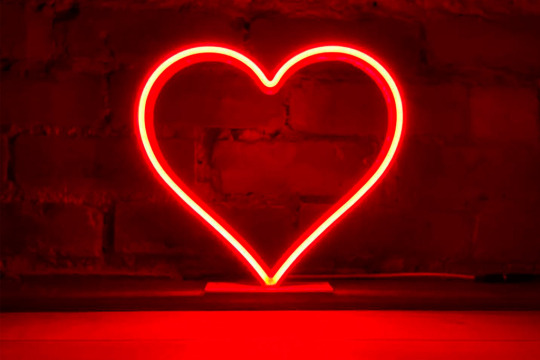
Because we associate hearts with love, and since hearts are red, we think of red being the color of love.
What color did you pick for HATE? Probably red again. But why?

We think of people's faces becoming red when they get upset because of the rush of blood to their cheeks. Therefore, when we think of hate, we think of red.
If you picked another color, that's okay, but think about why? It's because you associate that color with a tangible item, and that's why the color is symbolic of that abstract idea.
LOVE/HATE shows us the positive and negative of red, so when we see it in a show, we have to interpret if it's positive or negative.

But red just doesn't mean LOVE/HATE. According to Color Psychology, it could mean freedom, desire, or serve as a warning.
Another question asked what were the colors of the country's flag. In case you didn't know, the colors of flags have meaning. If we raise a white flag on a ship, it means we surrender. If someone is a green flag, they are a good person. If someone is a red flag, they are bad. If you are American, the red means hardiness and valor.

So in a black and white world, what does it mean if red emerges? How do we interpret that? Does it mean valor and hardiness? Does it mean hate? Does it mean love? Does it mean life like the red means on the Pride flag?
If you watched any of the videos from the previous lesson, Sam Smith & Kim Petras' "Unholy," Jessie Ware's "Free Yourself," or Troye Sivan's "My, My, My," the first color to emerge in their black and white worlds was red.

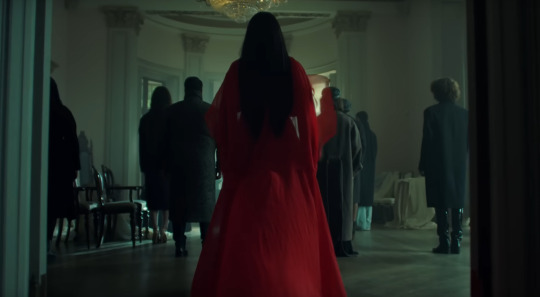
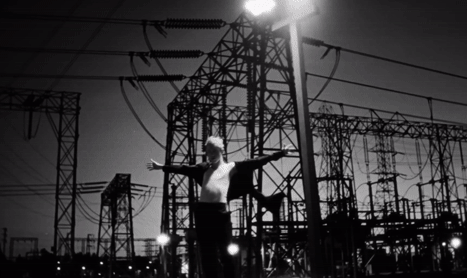
All the songs dealt with desire and freedom of sexual expression. Desire, sex, and freedom are all associated with red, so red would be the natural color to use to visually demonstrate this transition from a repressed world (black and white) to one with color. In the videos, once the initial red pops up, the red starts to seep into the world, tainting everything within reach.

This makes sense even in at its most basic structure. If red represents love and hate, in a black and white world (a world lacking color, therefore lacking emotions), the first color to emerge would be one that captures the strongest emotions = love and hate.

The Next Level
We must interpret what the basic colors mean, but remember that there are layers to Color Theory, and the next level is where Color Theory and Color Psychology get really exciting!
Primary Colors
When Primary Colors (red, yellow, blue) appear, they could mean one person is passionate, one is loyal, and one is happy, AS WELL AS they are the foundation to everything we are about to experience.

Warm Colors versus Cool Colors
Colors include lighting, so when we see warm lighting and colors, we can assume that situation or person is loving, kind, and warm. When we see cool lighting and colors, we can assume that situation or person is cold, isolated, and lonely.
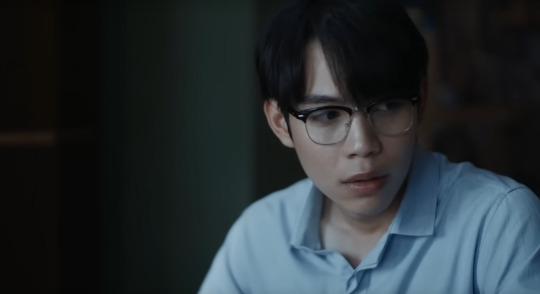

And if we see a transition between them, we can assume that situation or person is evolving.

Color Mixing and Combining
Once again, color includes lighting, so when we see two colors merge like red + blue = purple, we can conclude the personalities, or the love they share is also merging.
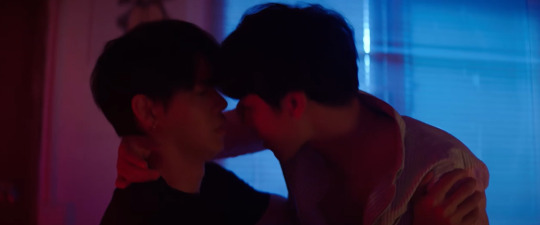

Color Hues
What happens when we start mixing the main color with black, grey, and white to get different shades, tones, and tints? In Color Psychology, if black is negative, white is positive, and grey is neutral, then those hues would reflect those meanings. Let's see it in practice!
We must start with the main hue.
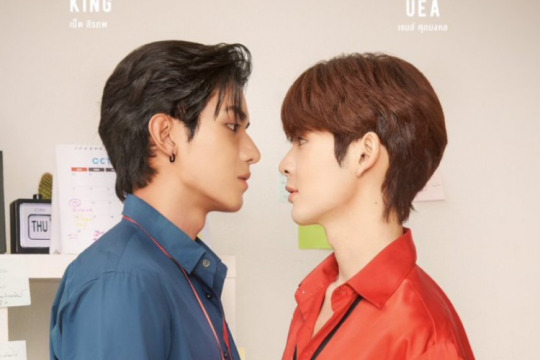
If we see this TONE (base color blended with grey), we can assume changes in emotions are happening, BUT the characters are unsure of those emotions (grey is in between black and white = neutral).
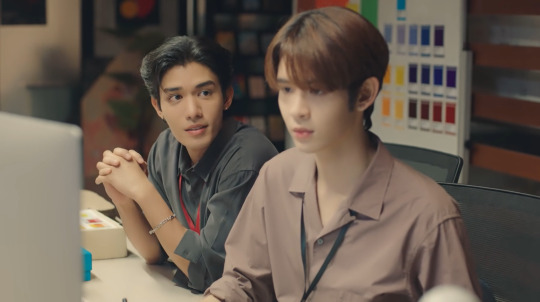
If we see this TINT (base color blended with white), we can assume something positive is happening with the character's life or emotions.
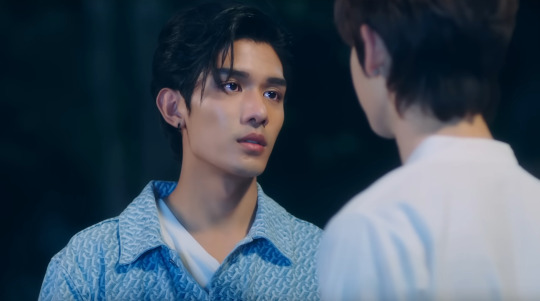
But if we see this SHADE (base color blended with black), we can assume something negative is happening with the character's life or emotions.

I could write twenty more posts about this, but we have to move on to the next lesson.
Activity 1 - Next Lesson
Watch both of the following videos. Try to apply the colors lesson to the first video, but focus on all the items you see in both videos: clothing, posters, environment, and additional items.
George Michael - "Freedom" - https://www.youtube.com/watch?v=diYAc7gB-0A
Hayley Kiyoko - "She" - https://www.youtube.com/watch?v=anIqZSfxOQU
See you for lesson 3 on Tuesday - Other Visuals
47 notes
·
View notes
Text
Plus, big structural things:
John and Sam are 'called to adventure' Joseph Campbell style, Dean is forced to it by obligations of the heart = the hero's journey, queered.
The deep liminality of their lives on the road, never really part of anything, living in motels, a motherless family, two fatherless boys, fighting monsters = family, American Dream, the very idea of heroism queered.
Dean is named for Dean Moriarty, who is a queer character from On The Road based on actual bisexual Neal Cassady. THAT'S WHY HIS NAME IS DEAN. Interestingly, Neal Cassady's wife wrote about him as being "the archetype of the American Man". He had a sexual relationship with Allen Ginsberg on and off for 20 years.
Monsters as queer allegory, and the very blurred lines about who the actual monsters of Supernatural really are = elements of queer theory 101.
Dean's role in his family is essentially feminine; he is John's partner, Sammy's mother, and he's the emotional heart of the family = masculine family role queered.
Sam gets Ruby as a supernatural helper, Dean gets Cas. Sam has a sex story with Ruby and raises Lucifer, Dean has a love story with Cas and togethe they invent free will. Again, a queered hero's journey.
Dean's complete inability to be at home in the straight world -- meaning, the world where everything is normative as shown in his Djinn dream, his relationship with Lisa, etc. Dean is not ok in normative spaces. Because Dean = QUEER.
There is no Abel in the Cain and Abel story and they invented Collette and then explicitly paralleled her with Cas as the person it would break Dean to kill. Like, that is just... that was crazy man. Bible stories queered!
The way Dean suffers when Cas is gone, moves his trenchcoat from stolen car to stolen car the whole time he's gone. The way he spent a year refusing to leave purgatory without Cas. The way he gives that fucking coat back to Cas?!
The fact that the entire last season of the show is structured around the emotional beats of the love story between Cas and Dean, right up until the fucked up end.
The fact that in the end, the only thing that's real, and the only thing that can save the world is fundamentally non-compliant love. Love that will not bend to 'god's will'.
There is so much more!! Dean's queerness is such a deep and undeniable feature of the story, and believe it:
IT IS A FEATURE, NOT A BUG.
Scenes/Things in Supernatural that genuinely don't make sense to me if Dean was straight:
The confession booth scene.
Sam just rolling with the fact that Dean's siren is a guy while still thinking sirens infect people through sex.
Dean being flustered by several men: Gunner Lawless, Aaron, Doctor Sexy, etc.
All the parallels between Destiel and other couples. (A big one being "last night on Earth" bc how do you do that accidentally.)
Having all the gay jokes be on Dean instead of Sam.
Paralleling Sam meeting his childhood celebrity crush with Dean meeting Gunner Lawless.
The boner Dean got when Cas cleaned up.
Dean gulping after Cas does an impression from a Western movie.
Charlie, a lesbian, calling Castiel "dreamy."
The way Mary looks at Dean and Cas when they hug.
Dean wondering why everyone assumes he's gay, while Sam not caring.
The logic that Charlie can't flirt with guys because she's only attracted to women, but then having Dean flirt with the guy for her.
Dean seeming disappointed when learning that Aaron's flirting was fake.
The amount of time Dean and Cas spend staring at each other.
Dean canonically having an orgy with Crowley.
A woman saying that she knows when someone's pining for someone else to Dean, just for us to learn that Dean was never in love with Amara.
6K notes
·
View notes
Text
Week 12 - Film Theories
This week, I explored key media theories that deepened my understanding of how films function. These theories act as lenses, shaping how we analyze and interpret films.
The primary Film Theories include:
Formalism
Structuralism
Apparatus Theory
Marxist Film Theory
Feminist Film Theory
Queer Film Theory
1. Formalism
Formalism Film Theory focuses on a film’s technical aspects such as lighting, sound, editing, and cinematography. Formalists examine how these elements influence the audience’s experience and whether they successfully convey meaning. This theory prioritizes a film’s stylistic choices over its narrative, emphasizing how technique shapes perception.
2. Structuralism
Structural Film Theory suggests that films follow a fundamental, underlying structure. By analyzing patterns, symbols, and recurring themes within a film—or across multiple films—we gain deeper insight into their meaning. Structuralists study how signs, conventions, and established cinematic rules shape storytelling.
3. Apparatus Theory
Apparatus Theory argues that films are inherently ideological, as the filmmaker’s perspective is embedded in every aspect of representation—what is filmed, how it is framed, and how it is edited. This theory asserts that filmmaking is a political act, either reinforcing or challenging cultural norms through visual storytelling.
4. Marxist Film Theory
Marxist Film Theory focuses on the relationship between cinema and society, examining how films reflect or critique economic and class structures. It emphasizes the connection between the audience and the film, as well as the director’s role in shaping meaning. Marxist filmmakers often use techniques like jump cuts and unexpected edits to prevent viewers from becoming too absorbed in the film, encouraging critical awareness rather than passive consumption.
5. Feminist Film Theory
Feminist Film Theory explores the representation of women in cinema. It critiques the "male gaze", a concept where women are portrayed primarily as objects of male desire, rather than as active participants in the story. This theory also examines how gender roles on-screen and behind the camera reflect broader societal structures, pushing for more authentic and equitable representation of women in film.
6. Queer Film Theory
Queer Film Theory analyzes how cinema influences heteronormative ideals and challenges traditional depictions of gender identity and sexual orientation. It examines the representation of LGBTQ+ individuals in film, often questioning and deconstructing mainstream narratives that have historically marginalized queer identities.
0 notes
Text
november 2024 wrap-up - young adult fiction

this month i read six (6) young adult novels.
all our hidden gifts by caroline o'donoghue 📖🔁 🌟🌟🌟🌟
i read this a couple years ago but never continued on with the series - i found a bundle of the entire trilogy in hardcover for a great price so decided to pick it up again.
i think i actually enjoyed this more on the reread! i remember when i first read it i thought it was just okay but i liked it a lot more as an adult than i did as a young teen. while solidly ya it's for sure intended for the upper end of that, high school juniors / seniors while i was a sophomore.
some elements i didn't love but i'm simply able to articulate better now. some things about the conclusion rub me the wrong way but i can't go into it without giving spoilers. and one little pet peeve of mine is that when the characters talk about gender or sexuality it's more in line with how you'd talk about queerness online than in real life. and i don't mean that in a negative way, just that the way you phrase things through text is going to be different than the way phrase things when you talk out loud, off the cuff, and the way the queer characters in all our hidden gifts talk about their queerness is more "through text" phrasing. and because of that it kinda sounds like they're giving prepared speeches or something; reads really unnatural.
the camelot betrayal by kiersten white 📖 🌟🌟🌟
big "middle book in a trilogy" syndrome. there's certainly some interesting stuff in this installment, but it's mainly set ups that will likely pay off in book three. we get more detail about guinevere's personality and especially the mystery surrounding her past / origins and more development of her relationships with arthur and mordred.
based on how guinevere's thing with mordred is going and some vague goings on with arthur i'm SO worried that this is going to turn into yet another series that resolves a love triangle by making on leg evil out of nowhere to justify the main character ending up with the morally grey bad boy. that's my least favorite trope, it's so lazy. but the series isn't done yet so anything can happen.
the excalibur curse by kiersten white 📖 🌟🌟🌟🌟
they're actually gay???? lesbians?? sword lesbians???
i was feeling a little uneasy about the final book after reading the second book, but i ended up enjoying the series overall. i think if you're into arthuriana but also into lowkey melodramatic young adult fantasy, you'll enjoy this.
i did not guess the twist about guinevere's past, though i did get close. as in, my theories were half right.
i really liked where white went with the characters and the relationships - i mentioned i was worried about arthur doing a complete heel turn to justify guinevere ending up with mordred and none of that happened! slight spoilers, but i actually like that the series ended without guinevere officially getting together with anyone.
the gifts that bind us by caroline o'donoghue 📖 🌟🌟🌟🌟
very compelling story about cults, fundamentalism, radicalization, et cetera. but also about community and activism and solidarity.
i kind of surprised myself by liking aaron as much as i did. don't get me wrong, he's still a piece of shit, but i found him really interesting. i guess it's good storytelling to have this example of someone who was more progressive but ended up being a massive right winger anyway - an example to the rest of the characters that they're more susceptible to the cult's manipulation than they might think, that they aren't immune just because they're more leftie than others in their town.
the background for the cult is really interesting as well, because american right-wing groups funneling people and money into uk groups is a very real phenomenon.
however, for a series that's very progressive with multiple trans characters and i think only one or two cishet characters, there was this tiny bit of weird gender essentialism? like, it's implied that only women can be natural-born witches because men born with magic will always go insane, which just felt very... strange? like, why, in this very trans series, is there suddenly this point about only women being suited for the mystic arts or whatever.
hearts that cut by kika hatzopoulou 📚 🌟🌟🌟
not as compelling as the first book :-(. i still love the lore / worldbuiling, still think it's very original compared to a lot of greek mythology inspired young adult fantasy, but the actual plot just wasn't as engaging.
the pacing was incredibly off. it felt like we spent so much tim ejust hanging around and talking that the entire climax and falling action had to happen in just five chapters. also, even though it's the same exact couple, i didn't think the romance was as compelling as in book one. idk i just didn't buy their feelings for each other as much as i did in the first book.
every gift a curse by caroline o'donoghue 📖 🌟🌟🌟
i don't know how to feel about this one? i'm not the biggest fan of ambiguous endings; they're very hit or miss for me, and this one felt like a miss.
also i'll be real, roe, the love interest, was starting to piss me off. yes, things were resolved by the end, but they were accusing maeve of cheating based on very flimsy evidence, and then when she understandibly was like "if you're going to constantly suspect me of cheating and can't trust me when i tell you i'm not, why are we still together?", they acted like she's the reason they broke up. like sure, she initiated the breakup, but only because you were being a shithead. did you expect her to stay with you throughout your repeated cheating accusations? and then they never even apologized! idk.
other than that though i did really enjoy it.
0 notes
Text
Week 8
Theories
This week I learnt about the main theories of media that provided me with a lot of knowledge and understanding on how media functions. These theories function similarly to glasses that let you see films.
The Film Theories are:
• Formalism
• Structuralism
• Apparatus Theory
• Marxist Film Theory
• Feminist Film Theory
• Queer Film Theory
1. Formalism Film Theory examines the film's technical elements, including the lighting, sound, editing, and shots. Formalists are therefore interested in how these components influence the viewer—that is, how well they work or don't work. In other words, formalism places a lot of emphasis on how a production's style conveys its intended meaning.

2. Structural Film Theory asserts that films have a fundamental underlying structure. We can learn more about meaning by examining the patterns and connections in a single film's structure as well as those between multiple films. Recurring themes and the interpretation of films through signs, symbols, and conventions are the main areas of concentration for structuralism.

3. Apparatus Theory claims that there is no avoiding the ideological element of movies. The filmmaker's personal point of view is entwined with the basic principles of representation: what is shot and what is edited. According to this theory, making a movie is essentially a political act that either upholds or challenges the prevailing cultural paradigm.

4. Marxist Film Theory is mostly involved in the film industry. It emphasises on the bond between the audience and the movie, as well as the link between the director and the picture. Marxist theory is predicated on persuading the audience by objective, realistic structure. Because of this, Marxist filmmakers employ startling edits and jump cuts to prevent their audience from suspending their disbelief.

5. Feminists Film Theory investigates the connection between women and cinema. Feminist theory first addressed how women are portrayed in films and criticises the "male gaze." Within this worldview, women are objects that are only significant in connection to males, while men are active participants in the world. The way that representation on screen and in the filmmaking process mirror the real world is another topic covered by feminist cinema theory.

6. Queer Theory investigates how heterosexual social standards are shaped by cinema. It looks at and challenges representations of persons whose gender identity and sexual orientation have historically been marginalised.

0 notes
Text
Writing about movies- Cultural analysis
As part of my weekly reading for communication and practise we were tasked to read chapter 4 of Writing about movies by Gocsik, Barsam and Monahan. This chapter is vital in my current study as we are studying a cultural theorist and mine (Jean Baudrillard) has some theories related to film so here are my notes and summaries from this chapter.
Chapter 4:
All films have meaning, some is explicit and shown on screen, others implicit and hidden below the surface with symbolism and parallels. Often times the people making movies may be just as oblivious of the cultural attitudes and deeper meanings shaping their cinematic stories as the people watching, this means certain implicit meanings are so subtle it may not be noticed by the filmmaker when writing, could be accidental.
Cultural analysis: when looking at a film through its representation, the most important theoretical frames we focus on are: Marxism (socioeconomic status) feminism, race and ethnicity studies and queer theory.
Socioeconomic status: When humans tell stories we cannot avoid issues of socioeconomic class because characters have to be rich, poor or something in between. Films decide whether to show certain classes in a negative or approving light as well as deciding whether to undermine or reinforce the dominant power structure in society. Sadly, movies typically lure the lower working class to rally around ideas that benefit the top percent and internalize the dominant culture’s values and ideas. Money ahs been in focus in many gangster and sports films as it motivates EVERYONE.
Feminism: Gender is a part of every story ever told, it is one of the core elements of many films. Representations of women have been harmful and objectifying throughout film history. Representations of women as passive objects of male desire prove this. Laura Mulvey takes the position that films lure audiences to identify with the male protagonist’s gaze and to thereby judge the worth of female characters as we would any beautiful object.
Race and ethnicity: In the long history of American cinema it presents only white characters onscreen. Others have a diverse cast of characters but present racial or ethnic minorities in a mildly unflattering or even blatantly prejudicial way. Hollywood movies even now often stumble into caricatures and stereotypes. For beginning film students a sensitivity to the relevant issues can enrich analysis of a movie and teach you how to properly represent people. When watching films ask yourself if it reinforces traditional views or using certain lighting or camera cues to alienise or “other” a diverse character.
Queer theory: Some movies especially older ones reinforce the idea that heterosexuality is the sole “normal” variety of human sexuality. Film scholars focus their attention on the various ways that movies convey heteronormativity- the subtle and not so subtle messages they send about homosexuality. When watching a film you must ask if the movie does portray alternative sexualities are the characters presented as social deviants or abnormal.
FILM GENRE: One of the most crucial and recurring elements of film analysis is its genre, understanding some basic principles about film genres and their importance I the industry help you develop critique even if your essay doesn’t focus on genre. Film genres are created organically over time as more films follow a certain structure, tone or setting. Genres are created because of society, horror films were created because of our collective fear of death and the human psyche’s need for catharsis. Westerns endorse ideals about America that Americans want to believe. Genres endorse fundamental beliefs. Genres once recognised and defined offer familiar stories, conventions themes and conflicts thar are easy for studios to sell and market. Studios and distributors can develop genre-identified stars. Genre’s share the same story formulas, themes, character types, setting, stars and presentation/ iconography.
For example if you look at gangster films, the mafia genre. The story is usually a down on their look disrespected immigrant who works there way up a gang or creates their won, rising until their own hubris gets the better of them. Themes of Greed, corruption and power. Character types of a young gangster, an aggressive or strong older one who is dangerous, an older gangster showing the younger one the ropes who usually dies. A setting of the streets of New York or another large urban city. Stars usually Robert De Niro, Joe Pesci, Al Pacino. Iconography of guns, suits money. Etc.
Historical analysis: Film history has been recorded since the first moving images from early experiments up until now in contemporary times. Film history includes the history of people, technology and industrial organisations that created the film. There are five basic approaches to film history. The economic approach( learning how every film has an economic history, seeing how films were funded, produced, distributed) auteurism,( this mainly judges the director as an author, it breaks down a directors style and their artistic integrity, what makes a film Hitchcock or Tarantino) the technological approach, ( they track the progression of each technological advancement made in the film industry, tracking when inventions were made who first used them and how they changed or influenced the industry) the aesthetic approach ( evaluating individual films by assessing their artistic significance, how does this work of art effect cinema what is it trying to say) and Film as social history ( since films are greatly influenced by the society and culture of the time this studies film as social history. We ask who made and saw the movie and why. They are interested in audience marketing and criticism. Overall they study the complex interaction of film as a social institution.)
1 note
·
View note
Text
@overripethighbones:
YEAH, this. and tbh I think the assumption that liking specific media means something about you underlies a lot of fandom tension and the feeling of betrayal some people have when they turn out not to automatically get along with everyone in fandom. There’s somehow they expectation that we are all fundamentally alike, similar people because we like the same TV show, and that is just. not how it works.
Yeah man. I've been thinking a lot about this for uhhh... a long time. Probably since before I got deep into Hannibal. And I honestly have many many tangential threads I could go on relating to this topic that I've been trying to narrow down.
But I think first of all, that tonal undercurrent of betrayal is a big part of what I find exhausting about fandom (perhaps especially on tumblr) right now. The sheer pervasiveness in the style of expressing disagreement with a certain perspective with this tone of anger and entitlement... yeah, I don't care for that. Part of being in fandom, for me, is about cultivating a sense of curiosity about other perspectives - why interact with other fans otherwise? I'm a pretty opinionated person, and pretty firm in my convictions, and there are certain approaches that I'm never going to vibe with, but it's because my view is so singular (as are most people's!) that that curiosity is necessary. I'm never going to find anyone whose sensibility completely overlaps with mine, so if I'm going to interact at all, it requires some grasp of the concept that, wrt relationship with the source material, people are different from each other.
I also think one frustration I have with this "well why would you even like this canon if you don't like this central aspect!" mindset - and I wrote up a post on this topic awhile ago, that I've been meaning to reblog and bring back around - is that what people perceive as being "central" or "essential" to the text varies considerably from person to person! Not in the sense that one can never make any more objective analytical claim as to which textual and thematic elements are more central to a text, and which are more ephemeral or not engaged with at all. But in the sense that... well, for one thing, most texts worth engaging with are pretty multifaceted, and analysis and critical approach pretty much requires zeroing in on one of those facets. One can never engage with literally every single essential element of a story. And for another, everybody carries their own perspectives and their own interpretative lenses with them at all times. Most of us have some sort of subjective overlay we're inclined to use for our personal engagement with stuff, or certain elements we're inclined to latch onto and amplify in our responses that others might not notice at all. That diversity is part of what's intellectually engaging about both fandom and criticism!
For me personally, for example, regarding Hannibal as a piece of media - I'm not a huge horror person. It's not its frightening or disturbing qualities that put me off, it's just not remarkably compelling as a story structure or bundle of critical concerns to me at the moment. The same is true for gothic fiction, although to a lesser degree - I have some interest in the gothic in the sense that a lot of film noir (a genre/style I do love) was influenced by it, and because a lot of the applications of queer theory that interest me engage with gothic tropes and narrative structure in some way. But I'm not especially drawn to gothic fiction for its own sake. I can recognize that Hannibal is a work of gothic horror, and that its engagement with that genre is a significant aspect of it. But I do not believe that one has to be a fan of that genre to "understand" Hannibal, or that one is "missing the point" of the show for not personally being drawn to that particular quality it possesses. (In fact, the question of why someone who doesn't normally like those genres likes this particular work that falls under those headings is, in fact, an interesting critical inquiry that's worth following through on, rather than snidely dismissing!)
Regarding what does appeal to me about the show - this will be a non-comprehensive overview, but: very stylized and avant-garde visuals, and an awareness of the expansive possibilities of the visual medium and visual storytelling that so few TV shows possess. Applicability to queer theory stuff that I'm invested in, like camp, decadent literature and the aestheticism movement, queer epistemology, gothic doubling (there's the gothic!), etc. A strong ensemble cast with lots of well-constructed and nuanced parallels between different character dynamics (one of the show's under-discussed strengths, imo). A primary ship that appeals to my id in a vast number of ways. ...Yeah probably lots of other stuff I'm forgetting about.
I think all of those things are absolutely relevant to what the show is doing, and what its thematic and artistic concerns are. (Yes, even the last one - the interpersonal dynamic between the show's main characters, and how its erotic undercurrents are implemented, are ripe for serious analysis, and have received it!) Yeah, these points of appeal are pretentious as fuck, because that's who I am as a person, but that's also the point - you cannot actually cleanly separate out what the "point" of a piece of media is from personal and subjective investment in it. I'm not missing the point by focusing on what interests me about it - what has continually interested me about media in general.
And I think this failure to understand how multifaceted and idiosyncratic everyone's approach to stories is, to some degree, also produces the idea that people can just transfer enjoyment from one work to another work that shares certain attributes with it. A lot of media that gets touted as being "like Hannibal" has been vastly disappointing to me, or has entertained me without prompting the same sort of love and creative investment. Conversely, when I think of media that has absolutely thrilled and delighted me, made me revel in what storytelling as a whole is capable of, in ways that feel similar to the feelings Hannibal instills in me - the first thing that comes to mind is The Insider (1999). It has absolutely nothing in common with Hannibal, outside of it being directed by Michael Mann of Manhunter fame, but it gave me the same sense of awe as to what the filmic medium can do - the attentiveness to its visual composition, and its operatic soundtrack, elevate it far above the bare bones of its story. See also Barry Lyndon (1975), which, like Hannibal, has so many frames that are pure works of art (they literally look like paintings! how!!).
Idk man. Art is complicated and has lots and lots of moving parts. The same is true of people. You can't guarantee anything.
A meme is not that deep but I do really reject the idea that it's possible to simply list television shows that will allow people to get to know you. All people know from a list of your favourite shows is that those shows resonated with you or were enjoyable to you in some way! Watching the shows wouldn't clue anyone into what you specifically liked about them, or what values or interests or aesthetics or ideologies of yours they reflected, because what people take from media varies wildly from person to person.
#replies#overripethighbones#this took - over an album length of time to write. rip#articulating The Thing i'm trying to articulate on this topic is like untangling the gordian knot#and has probably traveled far afield of tei's original comment#but ah well. associations come quickly.#fandom natterings#hannibal talk#my meta#queue
31 notes
·
View notes
Text
10 books!! :•)
ty 4 the tag @otrtbs (+ @serethereal i'm just doing it on this blog) <3 here r 10 books 2 get 2 know me
1. a history of glitter and blood, by hannah moskowitz
favorite book of. all time probably. first read this when i was like 16 i think and since then i've reread it about once a year. keep waiting for it to like...hit me less hard but every time i read it i am still v much moved in the same sort of way that i was the first time!!
2. the last unicorn, by peter s. beagle
feel like this story is like. integral 2 me as a person. first encountered it in the form of the 1982 movie as a child + then discovered it was a book in high school. there are differences between the two of course but the central themes are the same + i do think the ending like. permanently altered my brain as a child such that it has shaped my worldview ever since
3. the archive of alternate endings, by lindsey drager
newest addition 2 the list!! just read this book like a month ago and it was so good that it now has a place of honor on my favorites list <3 made me full-body sob but is like. so exactly perfect for me as a book that it felt like it was written 4 me
4. animorphs, by k.a. applegate
surprisingly not a childhood series 4 me bc i watched one episode of the tv show they made in the 90s + it scared me so much that i never touched the books. however i read the entire series in college and. it is now one of my favorite works of literature ever.
5. gormenghast, by mervyn peake
this book means a lot 2 me personally bc it's like. tied 2 my dad 4 me <3 he's a big reader but our tastes only have a small overlap, so it's not super often that we'll both love the same book. but when i was in high school i was looking for something 2 read + he pulled gormenghast off his bookshelf + was like try this nobody's ever heard of it bc peake is not well-known but it's like. sprawling dark fantasy. + it ended up being one of the most beautiful + unique stories i have ever read <3
6. you too can have a body like mine, by alexandra kleeman
a favorite satire <3 love kleeman's writing style + the sort of weird suburbia-horror of this story
7. the man who laughs, by victor hugo
generally speaking i am not a big ~classics~ person however. my final year of hs this was the book i chose for my like big final english paper + it's like. the first book i really had 2 study on a deeper level + i loved all the twisting symbolism + the tragedy of it all
8. six of crows, by leigh bardugo
technically this is 2 books bc i'm thinking of the entire duology but. yeah <3 fave like. fun fantasy story 2 reread when i want a book that makes me feel like i'm watching a movie while i read it. also love love love all the characters <3
9. this is how you lose the time war, by max gladstone and amal el-mohtar
first time i read this book i felt like my brain was melting!!! so short but the exact kind of story that i love; sort of scrambled poetic writing style + weird dark fantasy + sci-fi elements
10. no future: queer theory and the death drive, by lee edelman
i actually. do not recommend this book as it is so dry + dense and an absolute slog 2 read. however it makes the list bc encountering lee edelman's writing abt reproductive futurity + the death drive was like. top 10 life-altering moments that fundamentally changed the way i think in college. so!!!
no-pressure tags: @steelycunt @dykefever @pomegranate-pill @suspendedinbush @mayescapade :•)
#book recs#tag game <3#obviously i am a. big fantasy person as is evident from this list lol#i think it will simply always be my favorite genre !! apologies 4 the lack of genre diversity on this list tho lol#also mutuals. if anyone wants 2 exchange storygraphs <3#currently i am only following my beloved ridi aka tumblr user steelycunt + i think it would be fun 2 see what ur all reading!!
66 notes
·
View notes
Text
She's got a body like an hourglass That's ticking like a clock
Y'all are absolutely sleeping on a major part of Katya's arc.
Obviously we all love the queer subtext and shipping Katya and Sofia, but like. I'm honestly pretty tired of all analysis of media just boiling down to ships and romance. Katya is a really interesting character as-is, and it's worth exploring.
I've seen posts on here (this one by @notcaycepollard is really good) exploring the themes of food and eating in the film. And like yes absolutely. To quote that specific post (bold emphasis mine):
the rigid enforcement of domesticity as represented by the meals goncharov conspicuously fails to eat with katya [...] to me I think it speaks just as much about how trapped katya is by social expectations too. she tries so hard to perform the role of the good wife, polishing the fucking silverware and making blini [...] by the end of the film these conflicts are resolved with goncharov and katya at the table on the street, finally eating together but in a way that’s not constrained by the trappings of domesticity or the expectation of remaining true to your roots, katya is finally seen by goncharov as a whole person with her own internal life and he’s able to break bread with her, that final shot of them drinking wine with the church behind them, it’s just, the catholicism in this film is a lot okay
And this is an excellent analysis of these scenes, I totally agree with this take. BUT I think it leaves off a really important element. These scenes, Katya's struggle with performing domesticity with Goncharov, or arguably his failure to hold up his end of the marriage, are a direct metaphor for their inability to have children.
Throughout the film everyone's running out of time, the clock symbolism throughout, and then the scene where the men are assembling their weapons intercut with Katya getting dressed and putting on makeup — because her body is her weapon, and instead of her life being what is at risk of ending, for Katya it is her biological clock that is ticking. Her figure gets literally compared to an hour glass by Mario, and visually that metaphor is implied a couple of times as well.
Yeah I know it's a kind of misogynistic trope nowadays but this movie is from the 70's and was honestly kind of groundbreaking at the time (but it's for sure written and directed by men so like). I absolutely 100% believe that Goncharov and Katya as a couple cannot have children.
It's really conspicuous when you start looking for it. Obviously all the times Katya tries to make her husband food, always always traditional russial food, she's so clearly trying to cling to a traditional family life when it absolutely is crumbling in front of her. And idk if she's literally infertile or if Goncharov just won't sleep with her or what, that's a whole other discussion tbh, but I think Katya wants, or believes she should want, to have children. When her brother Valery pops up he makes these comments about their house being quiet, immediately followed up by talking about his own wife being pregnant again — very clearly implying like "why don't you have kids??". And once you look at the cinematography with this perspective in mind you can really see how shots of Katya and Goncharov are framed in these like kind of wide shots that really would make a lot more sense if there were kids in the shot, and like. Her walking past the playschool? The bit at the market where we see the mother and daughter, and then pan to Katya all by herself? Come on.
Which brings me to Sofia's character. And yes again we all love to read this relationship as sapphic af and this theory isn't necessarily incompatible with that? But basically fundamentally Sofia is written as a parallell to Katya. Really well portrayed in this image by @mimiadraws:

And a HUGE aspect of that is the fact that Sofia has children and Katya does not. Sofia's effortlessness when it comes to the gelato and the anchovies compared with Katya's struggles with food throughout the film really underscore the food as a parallel to motherhood to me. Katya sees in Sofia something that she does not believe she can ever have: this figure of the effortless woman, doing what she believes a woman is supposed to be doing: having children, making food, having a "normal" domestic life. Interestingly we never actually see inside of Sofia's own home, and we barely meet her children. But Katya still projects this perfect version of herself onto Sofia. (Which like I honestly think makes the sapphic reading more interesting? Who among us has not struggled to recognize wether we wanted to be her or be with her?)
And then you have Katya and Goncharov's final scene together, finally effortlestly eating together at the market. They have both finally embraced Naples and left their old life behind, and only then can they fulfill this element of their relationship...
Anyway Katya is pregnant when the movie ends. Change my mind. (You can't.)
92 notes
·
View notes
Text
“I learned a lot about humanity, human nature, through the character of Spock and the response to Spock… There are these… parts of the lives of all people that respond to a character like Spock in a very personal and very private way, and each in a very different way. But I think what it all boils down to is: Here's a man who knows something about me that nobody else knows. Here’s a person that understands me in a way that nobody else understands me.
Here’s a person that I’d like to be able to spend time with and talk to because he would know what I mean when I tell him how I feel. He would have insight that nobody else seems to have… He would acknowledge my existence. He would verify my existence in a way that few other people would. I exist and he knows that I exist. And I know that he exists. I know what he is going through. I know what his problems are... And I know that he would understand mine.”
“I’ve heard all of these theories (of the Spock/Kirk relationship), and many many more. Practically all of them contain a certain validity.”
- Leonard Nimoy in Star Trek Lives!
I just wanted to take the time to appreciate that Leonard Nimoy was most definitely aware of what Spock meant to us a character, and that it moved him. I mean, Spock’s story resonated with people from a variety of backgrounds in tons of ways. Spock is the outsider. He is fundamentally different. He is in this constant conflict with himself. And after struggling for so long? He finds peace in the acceptance of who he is and the elements of himself that he was taught to scorn. It’s a pretty damn compelling character arc that developed at a time when so many demographics felt rejected, and the optimism in the hope that you can find your place is what makes it so impactful.
Now, if we look at this from a queer perspective, I find it hard to believe that he didn’t recognize the parallels between Spock’s journey and the gay experience. I mean, he was willing to portray a character struggling with homophobia in Deathwatch with depth and care, a decision which could have ended his career! (And we cannot forget that his performance in that movie is what secured his casting as Spock in the first place.) He strived to be authentic to the soul even when that put him at odds with the interests of the network, which speaks volumes about who he was as an artist. Did he intentionally infuse subtext into his performance of Spock? I don’t know. But he realized how Spock was perceived, and he embraced that.

#leonard nimoy#what a dude#star trek#star trek tos#star trek lives!#the premise#space husbands#meta?#reflections#spock#k/s#kirk/spock#spirk#lgbt history#s’chn t’gai spock#tos#my post#best of me 🥰
783 notes
·
View notes
Text
I am Made of Love and It’s Stronger Than You: Steven Universe and Models of Queer Resistance in Science-Fiction
Chapter 1. Science-Fiction and Resistance in Queer Subjectivity
“In other words, queer resistances emerge when the mechanisms of heteronormativity are exposed, when the concepts of gender and sexuality are being rearticulated in ways that defy the exclusion of subjects whose identities, desires, and practices are considered contradictory and unintelligible, and when ‘the presumption of heterosexuality’ no longer holds.” (Dhaenens, Articulations of Queer Resistance 4).
In order to articulate how Steven Universe makes use of Science-fiction conventions to explore models of queer resistance, it is first necessary to examine how queerness is woven into the fabric of its setting. Although Gems as a species are distinctly queer, their society serves as a metaphor for the various ways the centre seeks to regulate categories of identity and desire. This section will not only demonstrate how the show utilises its speculative elements to express different modes of queerness, but also argue that herein lies a possibility for resistance. In the world of Steven Universe, queerness is not merely a vector for non-normative forms of desire and expression but also a powerful tool to dismantle systems of oppression. Refusing to assimilate to the hegemonic discourse means exposing the artificial processes with which these are constructed and denaturalising them in the process. These forms of denaturalisation function simultaneously as a legitimising force for queer subjectivities. It will, furthermore become clearer, how Steven Universe sees queerness in itself as a force of positivity.
1.1. Gender and Performativity
One of the most notable aspects of the show is the fact that all members of its alien race, the Gems, are presenting as female. Due to his hybrid nature, Steven is the only alien character to exhibit a male gender identity. This immediately separates Steven Universe from the values of hegemonic society which usually sees the masculine as representative of universality: “[…] the female body is marked within masculine discourse, whereby the masculine body, in its conception with the universe, remains unmarked.” (Butler, Gender Trouble 17). The show subverts the expectation of maleness being an unquestioned neutral, by never fully explaining why the gems refer to themselves using female pronouns and to what extent they actually identify with womanhood. Instead, Steven Universe asks the viewer to accept this premise and, in the process, turn the feminine into the new “unmarked” position.
While the idea of single gender alien societies is not new, it is indicative of science-fiction’s power of questioning “heteronormative implications of progress” by “reimagining […] gender, sexuality, and identity.” (Thibodeau 263). In other words, while the Gems are repeatedly shown to be a highly advanced species, their singular gender separates them from the concept of heterosexuality. In fact, the heterosexual matrix cannot operate in Gem society, as it relies on both the existence of a rigid gender binary and the stability of the two genders it represents (cp. Butler, Gender Trouble 184).
Steven Universe’s Gem race adhere to neither standard. Thomas adds that the Gems themselves have no biological sex or gender identity, in a way that humans might understand, therefore inviting queer analysis (cp. Thomas 4). Seeing as Gems are “outside of human conceptualisations of sex and gender” (cp. Férnandez 64), it only follows that their means of reproduction must also differentiate itself from human ideas about birth and sexual intercourse. In its place, the show offers an alternative model that shows Gems as artificially grown in gigantic plantations referred to as “kindergardens” (“On the Run”). The inorganic nature of Gem production completely subverts the heterosexual narrative around the importance of birth and family making. Such an analysis harkens back to Lee Edelman’s polemic No Future: Queer Theory and The Death Drive. Here, Edelman famously argues that the centring of the Child as the symbol for heterosexual reproduction stands in direct opposition to queerness. The Child is used to always deflect political action onto the future, stalling meaningful change (cp. Edelman 3). For Gems, neither children nor heterosexual reproduction are of any concern. The show establishes that they “burst out of the earth’s crust already knowing what they’re supposed to be” (“Greg the Babysitter” 06:50— 06:59). By utilising the genre of science-fiction, Steven Universe thus suggests to the audience that a separation of creating life and heterosexuality is possible, which broadens the perspectives about queer possibilities.
The possibilities configured in the show’s alien species also expand to the realms of more profound matters of queer identity. The episode “Steven the Sword Fighter” reveals that Gem bodies are not material. A Gem’s consciousness is merely stored within her gem which in turn projects the body to the outside world. Therefore, a Gem’s appearance is merely “a conscious manifestation of light” (“Last One Out Of Beach City” 09:46—09:50). This feature of alien biology relates to Judith Butler’s theory on the performativity of gender. According to her work Gender Trouble: Feminism and the Subversion of Identity, gender is not essential nor innate, but produced through repeated performative acts. These behaviours are regulated by cultural norms which then are projected onto the body: “[…] [A]cts, gestures, and desire produce the effect of an internal core or substance, but produce this on the surface of the body, through play of signifying absences that suggest, but not reveal, the organizing principle of identity as a cause. Such acts, gestures, enactments, generally construed, are to express fabrications manufactured and sustained through corporeal signs and other discursive means.” (Butler, Gender Trouble 188). True to this notion, the Gems reflect their identity onto their bodies, proving that, at least for them “gender is always a doing” (Butler, Gender Trouble 34). Steven Universe successfully shows by means of alien biology how femininity is a performance that can be presented by anyone or anything (cp. Thomas 6). This is a notion that is conform with queer theory’s aim of rendering essentialist notions of identity obsolete (cp. Hall 93) and contributes to the larger goal of achieving queer liberation.
The ways the different characters make use of their abilities to play with gender are manifold and reflective of their progression as characters. Valentín rightfully states that one of the more interesting aspects of the show is the unique ways in which all characters straddle the lines between masculinity and femininity (cp. Valentín 203).
Amethyst in particular promises deeper insights into the potential of different configurations of gender and identity. As Gem bodies are essentially illusions, Gems have the explicit power to shapeshift, stressing the usefulness of speculative elements for queer explorations. Here, Amethyst stands out as she makes use of this power the most, constantly shifting between different appearances. She impersonates people, turns into animals, and even embodies inanimate objects for her own amusement. The casualness with which she regards shapeshifting show cases a fluid stance towards identity that is explicitly revelling in the act of imitation and queers her abilities. Moreover, it could even be said that Amethyst constantly parodies the notion of identity itself and mocks those with a more rigid mindset. Thomas implies that her experimentation with different gender expressions suggests a complicated relationship to identity, while still remaining open and playful (cp. Thomas 6). When Steven’s father, Greg, tells her, he is uncomfortable with shapeshifting, she transforms into him and replies: “Oh, I forgot. You’re so sensitive.” (“Maximum Capacity” 09:00—09:10). For Eli Dunn, these instances can force the viewer to recognise the implications of gender as a construct in ways that hold meaning for making a queer worldview more accessible: “The ability of the Gems to change their gender representation at will is a type of magic that fundamentally disconnects notions of gender from gender identity in the mind of the viewer. When the viewer is told that the Gems bodies are constructed and unreal, the viewer is forced to reconsider the implications of the female coded body traits […]” (Dunn 47).
Regardless, Amethyst’s queer approach towards identity does not mean a complete disconnection to the concept itself. On the contrary, the effects of internalised self-hatred are most visible in Amethyst’s expressions of body variance. A later episode shows Amethyst’s physical body being repeatedly destroyed, forcing her to retreat into her Gem and regenerate (“Reformed”). Due to her impatience, she does not undergo the process as intended and returns in a deformed state. As the episode continues, her teammates chastise her to do it properly, leading to her spitefully taking on more and more ridiculous forms. While doing so, she mocks the notions of what constitutes a “proper” body at all: “Just as bodily surfaces are enacted as the natural, so these surfaces can become the site of a dissonant and denaturalizes performance that reveals the performative status of the natural itself.” (Butler, Gender Trouble 200). In this way, Amethyst’s alien abilities function as a tool of critique, revealing how the body can act as performance. The interesting part is, that Amethyst’s questioning of bodily norms does not only read as decisively queer, but also thematises how repressive norms can affect an individual.
As Gem society is extraordinarily normative, Amethysts are expected to attain a certain standard of height. Even though shapeshifting is a possibility for Gems, the ability requires conscious effort and is therefore not sustainable. It is because of this reason that Amethyst’s lack of height is considered a defect on Homeworld. Melzer states that identity performance always acts within a “highly regulative set of norms” which dictate what is considered a valid representative of any given category (cp. Melzer 43). Amethyst moves between gendered positions by means of coping with Gem society finding her to be insufficient. As height is often associated with strength and masculinity, Amethyst occasionally takes on the wrestling persona of “Purple Puma” (“Tiger Millionaire”). While in this form, she towers over ordinary people, exhibiting a flat, hairy chest and uses masculine pronouns for herself (cp. Valentín 204). Jack Halberstam recognises that some forms of female masculinity are a form of “social rebellion” or “the place of pathology” wherein women use masculine signifiers to escape restrictive expectations (cp. Halberstam, Female Masculinity 9). These observations are in accordance with Butler’s assertion that gender as a performance is “open to splitting, self-parody, self-criticism, and those hyperbolic exhibitions of “the natural” that, in their very exaggeration, reveal its fundamentally phantasmic status.” (Butler, Gender Trouble 200).
Not only does Amethyst’s repeated mockery of body and gender norms expose them as illusions, but the show itself hints at experimentation with identity possibly alleviating feelings of inadequacy. Amethyst confesses later that she does not need the figure of Purple Puma anymore, as she now accepts herself the way she is: “I needed it when I felt like I wasn’t good enough. But I don’t feel that way anymore” (“Tiger Philanthropist” 07:10—07:16). Nevertheless, the show manages to avoid pathologizing queerness. The end of the episode shows Amethyst return to her alter ego, not in search for validation but because her time as a wrestler “meant everything (to her)” (“Tiger Philanthropist” 09:03—09:06). Without disregarding the play on parodic masculinity as a coping mechanism, Steven Universe attests a healing quality to the experimentation with gender. The alien body is presented as the site of social criticism, as well as positive connotations to queerness itself. These positive feelings towards queerness are depicted as harbouring an immense power for resisting further oppression.
How an acceptance of one’s own status as a queered entity can be harvested for resistance, is perfectly encapsulated in Amethyst’s confrontation with the enemy Gem Jasper. The parallels between these two opposing factions are clear: Jasper, similarly to Amethyst, was created to be a Homeworld soldier. Contrary to Amethyst, however, Jasper is described as the perfect example of what her specific Gem type should be (cp. “Beta”). Jasper herself asserts her superiority and makes clear the consequences of not fulfilling Homeworld’s demands: “Every Gem is made for a purpose: to serve the order of the Diamonds. Those who cannot fit inside this order must be purged!” (“Earthlings” 02:00— 02:06). In this sense, Jasper functions as the embodiment of Homeworld’s hegemonic discourse that excludes undesirable bodies and identities. She looks down on queerness and explicitly connects her abilities to serve the rigid system to her own worth: “Fighting is my life! It’s what I was made for! It is what you were made for too, runt.” (“Crack the Whip” 07:35—07:42). As Jasper repeatedly judges Amethyst according to normative standards of body and identity, Amethyst’s desire for victory over Jasper is framed as Amethyst complying to Homeworld’s demands. Instead of accepting her difference and alignment to queered identities, Amethyst attempts to meet Jasper on her terms which can only result in failure: “Steven... I can't win. No matter what I do, no matter how hard I work, she came out right, and I came out... wrong...” (“Earthlings” 03:54—04:05). It is when Steven redirects her focus onto the strength of their shared status as queer subjectivities, that they decide to team up: “That's just what Jasper thinks. She's the only one who thinks you should be like her! Stop trying to be like Jasper. You're nothing like Jasper! You're like me! Because we're both not like anybody.” (“Earthlings” 04:05— 04:18). In this way, Amethyst’s acceptance of her queered body leads to a connection to Steven as an ally in shared marginalisation. Their subsequent fusion defeats Jasper with ease where both of them alone where unable to do so.
Although fusion will be examined in detail later, its role in this encounter is particularly meaningful. Fusion, as the process of merging bodies, revolves around the feminine realms of emotional connection and the queer concept of blurring the boundaries of body and mind, turning it into the perfect metaphor for the strength of acceptance and unity for queer liberation purposes. In contrast to Jasper, Amethyst’s closeness to fluid identities and queerness makes it easier for her to engage in fusion and find strength. While it is true that Steven Universe does not negate physical limitations, the show proposes queer solidarity and self-acceptance as means of liberation.
The theme of gender expression standing in direct correlation to healing is also explored from a different angle in the character of Pearl. Pearl’s relationship to gender fluidity and performative identity is best understood when analysed through the lenses of lesbianism and female masculinity. Naturally, this beckons the question of how technically genderless aliens can be regarded lesbian. This is deeply connected to the nature of the category woman itself. Jack Halberstam criticises the mindset of restricting the boundaries of womanhood while leaving the lines of masculinity open: “[…] why is it [….] that one finds the limits of femininity so quickly whereas the limits of masculinity [….] seem fairly expansive?” (Halberstam, Female Masculinity 28). The policing of womanhood can be traced back to the masculine as unquestioned neutral territory when the feminine is only allowed to be represented by a highly specific set of features. When we return to Butler, the problem starts to dissolve in her theory of performativity. Womanhood is a set of behaviours and not dictated by biology: “The very subject of women is no longer understood in stable or abiding terms.” (Butler, Gender Trouble 2). The category of woman is henceforth rendered queer, as it is unstable and subject to change.
To regard Pearl as a woman and lesbian is therefore to view her identity not in terms of heteronormative discourses of biology, but allowing for the possibility to extrapolate valuable insights about gendered positions in society: “However, in an exploration of the fundamental instability of the category “women” does not find against feminism but, in resisting the urge to foreclose prematurely that category, licenses new possibilities for a feminism that constitutes “women” as the effect of, not the prerequisite for, its inquiries.” (Jagose, Way Out 273). With regards to the popular definition of lesbians as women cultivating romantic relationship with other women, identifying Pearl as a lesbian is a valid point of analysis. Steven Universe takes great care to repeatedly emphasise and explore the relationship between Pearl and Steven’s mother, Rose. The romantic attraction Pearl harbours for Rose defines her character and affects most of her actions throughout the course of the show. Interestingly, her progression in terms of lesbian affiliations and resistance towards Homeworld’s demands are reflected onto her body in increasingly explicit ways. Pearl embodies a progression into female masculinity where her gender performance changes with her widening understanding of liberation. This harkens back to Halberstam’s identification of female masculinity as a tool to subvert masculine power by turning a “blind eye to conventional masculinities and refusing to engage” (Halberstam, Female Masculinity 9).
To understand this better, one needs to examine the role Pearl is meant to fulfil in the social hierarchy of her home planet. Pearls, as a category of Gems, are made to serve and entertain elite Gems: “[…] Pearls aren’t made for this. They are meant for looking nice and holding your stuff for you […]” (“Back to the Barn” 03:02—03:12). Pearls are therefore, more than other Gem categories, marked with femininity and womanhood. Simone de Beauvoir remarks upon women’s role as subservient to masculine powers, always forced to obey as the perpetual Other (cp. de Beauvoir 29). Pearls are not only meant for the purpose of servitude, but also reduced to their appearance which usually mirrors that of her master: Upon examining Pearl, a Homeworld Gem remarks: “It looks like a fancy one, too. Who do you belong to anyway?” (“Back to the Barn” 03:38—03:42). Pearl herself disturbs these lines and expresses liberation through a refusal of participation in the hegemony of Homeworld, going as far as to openly rebel against it.
The progression becomes ever so clearer when the programme offers a flashback to show how Pearl conducted herself on Homeworld. Her dress is designed to be decidedly feminine while she defaults to a subservient body position. As Homeworld demands conformity to the role of a “Pearl”, the parallels to earth’s gender discourse become highly visible. Despite the Gem at the core of their being serving as the only material reality behind their existence, Homeworld society expects a certain set of presentation and behaviours from each Gem. Deviation from the norm is not allowed and can be met with punishment. With regards to her latter transformation, Pearl’s position on Homeworld recalls Butler: “Femininity is taken on by a woman who ‘wishes for masculinity,’ but fears the retributive consequences of taking on the public appearance of masculinity.” (Butler, Gender Trouble 70). After Pearl flees to earth and joins a rebellion against Homeworld’s regime, her presentation and performance become masculinised. She takes up sword fighting, fully knowing that this is not acceptable for a Pearl (“Sworn to the Sword”), and her subsequent regenerations take on more masculine aspects with each iteration: “The lesbian body, then, (like every body) is discursively constructed, a cultural text, on the surface of which the constantly changing, and contradictory possible meanings of “lesbian” are inscribed and resisted.” (Jagose, Way out 280).
First, Pearl’s dress is exchanged for a pair of leggings with a tule skirt serving as a layer (“Gem Glow”), the second transformation shows her abandoning the skirt while still suggesting a feminine alignment by incorporating a large bow into her outfit (“Steven The Sword Fighter”). Meanwhile, the colour pink becomes less apparent in her design with time. The show suggests Pearl’s move from the feminine towards the masculine end of the spectrum that is used to embody resistance to Homeworld’s demands of femininity. In other words, Pearl’s female masculinity is constructed in the same way, even conceived through the same discursive means, as the hegemonic identity she inhabited before (cp. Jagose, Way out 278). Pearl’s identity becomes queered as her body proves to be signifier of gender fluidity that always changes within contexts (cp. Butler, Gender Trouble 188). This can be seen as a typical articulation of queer resistance, as it not only exposes the artificiality of gendered categories but also refuses to replicate them (cp. Butler, Gender Trouble 201). Steven Universe implies a connection between queer desires and the ways they are reflected on the body. Halberstam himself states that this mixture can be particularly dangerous to heteronormative society: “[…] when and where female masculinity conjoins with possibly queer identities, it is far less likely to meet with approval. Because female masculinity seems to be at its most threatening when coupled with lesbian desire.” (Halberstam, Female Masculinity 28).
The programme outright states that the moment of awakening for Pearl is directly incited by her love for Rose to whom she was gifted as a servant: “I was supposed to make her happy. I just never could” (“Now We’re Only Falling Apart” 03:06—03:10). Seeing how Rose is uncomfortable with the restrictions on Homeworld, Pearl incites the first sparks of rebellion in an effort to make her happy. She suggests tricking the authorities and spending a day on earth when it was explicitly forbidden for Rose to do so (“Now We’re Only Falling Apart”). This slight misdemeanour quickly spirals out of control, as both Pearl and Rose grow endeared by Earth and develop a desire to live there freely. The liberational implications of their actions are hard to miss. They harken back to the building of queer utopia which proves how queerness itself “is a longing that propels us onward, beyond romances of the negative and toiling of the present. Queerness is that thing that lets us feel that this world is not enough, that indeed something is missing.” (Muñoz 1).
However, Pearl’s freedom from authorities may be paradoxically stifled because of her connections to Rose. The programme grapples with the fact that Pearl’s wish to follow Rose may be interpreted as her remaining subservient to her former master instead of breaking free. To counter that, it can be said that Pearl’s love for Rose is completely inappropriate to Homeworld society. When Pearl attempts to fuse with Rose, she exclaims: “This is very not allowed.” (“Now We’re Only Falling Apart” 09:58—10:01). This means that their lesbian relationship is a societal taboo that gives room to further transgression and ultimately, rebellion. How exactly queer love and the war against oppression are cause and effect of one another within the show will be examined at a later point. For now, it is important to note that Pearl’s inability to let Rose go is presented as a failure to completely liberate herself. While the relationship is still queer, it is not equal and remains tenuously connected to the hierarchy out of which it was born. Various scenes suggest that even after Rose’s death, Pearl is unable to let go of their relationship: “Everything I ever did, I did for her. Now she’s gone. But I’m still here.” (“Rose’s Scabbard” 09:30—09:35). It is when Pearl accepts Rose’s death and experiences attraction to a human woman that her arch is completed. The episode “Last One Out Of Beach City” shows Pearl trying to flirt with a mysterious girl and breaking various rules in the process: “I am done thinking about the past. Tonight, I am all about the future.” (“Last One Out Of Beach City” 04:50—05:00). The symbol for overcoming the boundaries of her past and freeing herself from the last constraints of Homeworld’s oppression are encapsulated in her wearing a jacket. As a Gem’s attire is normally an inseparable part of her body, wearing clothes overstep Gem conventions and signify human territory. Here, she crosses lines between cultures to fulfil a romantic desire. Even her interest in the girl itself is significantly queered as an example of interspecies romance.
The importance of this experience can be observed with Pearl’s last regeneration. Her new form reflects the change towards a more queer, liberated identity onto her body. The colour pink is entirely absent from her design, signifying her removal from symbolic femininity as well as her freedom from Rose. The ways the design incorporates pants and a jacket recall the events of “Last One Out Of Beach City” while suggesting a close alignment to the classical butch identity (“Change Your Mind”). (Fig. 1. Pearl in her jacket. “Last One Out Of Beach City.” 02:52) Amethyst shrugs off masculinist notions about strength and overcomes her desire to fit into hegemonic society by questioning the nature of normativity itself. Pearl, on the other hand, escapes demands of femininity and her fate as a servant with the transformative power of queer desire. Consequently, Steven Universe uses the alien biological components of shapeshifting and the fantastical element of alternative societies to subvert expectations of hegemonic gender and reveal the artificiality of identity as a construct. While doing so, the programme also refers to Butler’s theories in ways that renegotiate queer subjectivities along the lines of political change: “The critical task is, rather, to locate strategies of subversive repetition enabled by those constructions, to affirm the local possibilities of intervention […]” (Butler, Gender Trouble 200). Both Amethyst and Pearl gain the strength to overcome the hegemonic oppression put upon them by their home planet through means of performativity. The queer reality of Pearl’s and Amethyst’s victories negate hegemonic assumptions about identity in ways that threaten oppressive forces. Queering one’s own identity is deeply connected to envisioning a future where categories break down. By engaging in performative practices, one is already in the process of building this exact world: “Performativity and Utopia both call into question what is epistemologically there and signal a highly ephemeral ontological field that can be characterized as a doing in futurity.” (Muñoz 26).
Works Cited:
Beauvoir, Simone de. The Second Sex. New York: Vintage Books 1989, c1952. Print.
Butler, Judith. Undoing Gender. New York: Routledge, 2004.
--. Gender Trouble: Feminism and the Subversion of Identity. 1990.
Dhaenens, Frederik: “Articulations of queer resistance on the small screen”, Continuum 28.4, 2014. Pp. 520-531.
-- “The Fantastic Queer: Reading Gay Representations in Torchwood and True Blood as Articulations of Queer Resistance”, Critical Studies in Media Communication, 30.2, 2013. Pp. 102-116.
Dunn, Eli: “Steven Universe, Fusion Magic, and the Queer Cartoon Carnivalesque.” Gender Forum: An Internet Journal of Gender Studies 56, 2016. Pp. 44–57.
Edelman, Lee. No Future: Queer Theory and the Death Drive. 2004.
Halberstam, Jack. Female Masculinity. Durham: Duke University Press, 1998.
Hall, Donald E. Queer Theories. Hampshire: Palgrave Macmillan, 2003.
Hollinger, Veronica.: “(Re)Reading Queerly: Science Fiction, Feminism, and the Defamiliarization of Gender.” Science Fiction Studies 26.1, 1999. Pp. 23–40.
Jagose, Annamarie. Queer Theory: An Introduction. New York: New York University Press, 1996. Print.
--: “Way Out: The Category ‘Lesbian’ and the Fantasy of the Utopic Space.” Journal of the History of Sexuality, 4.2, 1993. Pp. 264–287.
--: “The Trouble with Antinormativity” Differences 1 26.1, 2015. Pp. 26–47.
Jameson, Fredric. Archaeologies of the Future: The Desire Called Utopia and Other Science Fictions. London: Verso, 2005.
Melzer, Patricia. Alien Constructions: Science Fiction and Feminist Thought. University of Texas Press, 2006.
Merrick, Helen: “Gender in Science Fiction.” The Cambridge Companion to Science Fiction, edited by Edward James and Farah Mendlesohn, Cambridge University Press, 2003, pp. 241–252.
Moore, Mandy Elizabeth: "Future Visions: Queer Utopia in Steven Universe," Research on Diversity in Youth Literature 2.1, 2019. Pp. 1-17.
Muñoz, José E. Cruising Utopia: The Then and There of Queer Futurity, 2009.
Pawlak, Wendy Sue: “The Spaces between: Non-Binary Representations of Gender in Twentieth-Century American Film.” Dissertation Abstracts International, 73.11, U of ArizonaProQuest, 2013.
Pearson, Wendy Gay: “Alien Cryptographies: The View from Queer.” Science Fiction Studies 26.1, 1999. Pp. 1-22.
--: “Science Fiction and Queer Theory” Published as a book chapter in: The Cambridge Companion to Science Fiction. Edward James and Farah Mendlesohn. (Eds.), 2003. Pp. 149-160.
Roqueta Fernandez, Marta: “Posthumanism and the creation of racialised, queer identities and sexualities: An analysis of ‘Steven Universe’” Monográfico: Nuevas Amazonas, 2.7, 2019. Pp. 48-84. 78 Shelley,
Valentin, Al: “Using the Animator’s Tools to Dismantle the Master’s House? Gender, Race, Sexuality and Disability in Cartoon Network’s Adventure Time and Steven Universe.” Buffy to Batgirl: Essays on Female Power, Evolving Femininity and Gender Roles in Science Fiction and Fantasy, edited by Julie M. Still et al., McFarland & Company Publishing, 2019, pp. 175–215.
Vasques Vital, André: “Water, gender, and modern science in the Steven Universe animation”, Feminist Media Studies, 2019. Ward, Pendleton, creator. Adventure Time. Cartoon Network Studios, 2010.
Wälivaara, Josefine. Dreams of a Subversive Future: Sexuality, (Hetero)normativity, and Queer Potential in Science Fiction Film and Television. Umeå, 2016
#Steven Universe#Steven Universe meta#Steven Universe analysis#SU analysis#SU meta#SU#Queer Studies#Academia#Media analysis#Long text#Rebecca Sugar#LGBT media#My M.A thesis#at least part of
79 notes
·
View notes
Text
@bullgod1997 I was somehow blissfully unaware of neomasculinity!

Yeah so I'm not the first one to point this out but my guess is that the insane misogyny of modern fascism owes a lot to the material breakdown of gender relations under capitalism, which happened to be accompanied by women's and queer liberation movements pushing for the socio-cultural breakdown of gender, which in turn gets recuperated by capital.
The "degeneration" of "traditional sex roles" is because under late stage capitalism less and less people can support a family on one income, so these guys who grew up middle-class watched capitalist patriarchy shift and destabilize before their eyes, and now feel like they've been cheated out of their place at the feast. (The feast being, uh, women. Well, more broadly, the "marriage, house, kids, white picket fence" industrial complex.)
To borrow a word from Guérin, today's fascists - like yesterday's - are the old middle class that has become "proletarianized" under the new system, but in this case it's also, like- gender-proletarianization. And then these dudes blame their feelings of alienation and the evisceration of community on 'SJWs' and queer theory, rather than on late stage capitalism, and they think the way to rebuild community is through a reassertion of patriarchy.
Basically this:
The rationale behind the inordinate emphasis which both fascist regimes were to place on communal spectacles to engender the ethos of the ‘new order’ is epitomized in an important article written by Jean-Richard Bloch for the avant-garde ultra-nationalist periodical La Voce at the height of the interventionist campaign. Entitled ‘Democracy and Festivals’ it diagnosed as the fundamental problem of modern life ‘its lack of public festivals, of ritual and theatrical elements that could restore an aura of grand spectacle to increasingly impersonal and individualist world. Modern people had ceased to believe in Catholicism but had yet to find appropriate secular substitutes for its festivals.’
but for gender instead of religion.
7 notes
·
View notes
Link
The Marxist left finds itself confronted by three insidious big lies that threaten the revolutionary and emancipatory foundation of the Marxist project, all related to undermining women’s liberation; they are:
1. Transwomen are women.
2. Sex work is work.
3. Feminism is bourgeois.
Misogyny in its many forms has long been a challenge for the left; not just the misogyny of the reactionary right, but misogyny coming from within the left itself. But it has not been until recently that this leftist misogyny has sought to portray itself as being inherently progressive. By engaging in revisionism of the most blatant kind, reactionary elements within the left have managed to posit themselves as the agents of progress. Much has already been written about the harms caused by these three lies, but no attempt has yet to be made to debunk them from a solidly Marxist standpoint. That is what we are out to accomplish here; to demonstrate definitively that these big lies are not just regressive, but inherently revisionist and anti-Marxist to the core.
The first of these three big lies, “Transwomen are women”, might well be the most damaging, because it directly contradicts the heart of the Marxist method: dialectical materialism. There are two main definitions used by proponents of transgenderism to explain their narrative. The first is that gender is an identity; the state of being a man or a woman (or any one of the other numerous “gender identities”) stems not from biological sex (to the extent that transactivists acknowledge the existence of biological sex), but from an internal identity, i.e. personal feelings, personal consciousness. The second definition says that transpeople are not really the sex they physically are, but the sex they say they are, because they really have “male” or “female” brains. Both of these definitions are rooted in the personal, not the material. One of the patron saints of queer theory, Judith Butler, says:
“It’s one thing to say that gender is performed and that is a little different from saying gender is performative. When we say gender is performed we usually mean that we’ve taken on a role or we’re acting in some way and that our acting or our role-playing is crucial to the gender that we are and the gender that we present to the world. To say that gender is performative is a little different because for something to be performative means that it produces a series of effects. We act and walk and speak and talk in ways that consolidate an impression of being a man or being a woman.”[1]
Though queer theory is a postmodernist philosophy, its roots go far deeper than just postmodernism; rather, this statement of Butler’s is an example of the dialectics of idealism. Marxism, as a philosophy, was formed in reaction to the idealist dialectics of the Young Hegelians. The dialects of idealism posit that reality flows from consciousness. Marx, on the other hand, argued “It is not the consciousness of men that determines their existence, but their social existence that determines their consciousness.”[2] That is, it is not our thoughts that shape material reality, but material reality that shapes our thoughts. In fact, Marx’s first major work, The German Ideology, is exclusively dedicated to explaining this.
So what is the materialist definition of gender? And how does the embrace of the idealist definition under the guise of Marxism harm the Marxist aim of women’s liberation? The foundational Marxist text dealing with the oppression of women is Engels’ The Origin of the Family, Private Property, and the State. According to Engels, while there has always existed a sexual division of labor in human society, it is not until the rise of private property that this division becomes hierarchical. Before the rise of private property, society was organized under what was called “mother right”, i.e. a person’s family is traced through their mother, given the difficulty of identifying with certainty the father in primitive communist society. But because private property grew out of male labor, and became concentrated in male hands, mother right gave way to “father right”. In order to bequeath his property to his son, the father needed to know with certainty who his sons were. This meant controlling the reproductive labor of the female sex, and its subordination to male supremacy; thus the advent of patriarchy. In Chapter II of Origin of Family Engels calls the overthrow of mother-right “…the world historical defeat of the female sex. The man took command in the home also; the woman was degraded and reduced to servitude, she became the slave of his lust and a mere instrument for the production of children.”[3] Note that Engels here is dealing with sex, with biology. Women are not oppressed because of some abstract gender identity, but because of their sex. Class society and patriarchy, the two of which exist in a symbiosis, need to control women’s reproductive labor to sustain themselves. To put it more bluntly, they need to control the means of reproduction. Thus, women’s oppression has its origin in material reality.
But we have not yet dealt with the concept of gender. In the current queer theory dominated discourse, sex and gender are increasingly become conflated to the point that they are being used as synonyms for one another. Engels analysis of patriarchy is in many ways incomplete, but it forms the basis of future materialist explorations of sex and gender. The second-wave feminists who developed much of the thought around gender did not revise these fundamentals, but expanded on them, the opposite of what today’s revisionists are doing. Gender, according to the radical feminist Rebecca Reilly-Cooper, is “the value system that prescribes and proscribes forms of behaviour and appearance for members of the different sex classes, and that assigns superior value to one sex class at the expense of the other.”[4] Gender is therefore not the same thing as biological sex, but a kind of parasite grafted on top of biological sex to maintain the current sexual hierarchy, and ensure continued male control over reproductive labor. Gender non-conforming, as well as homosexual, men and women are therefore “exiled” from their gender community not because of some abstract identity, but because they do not fulfill their proscribed functions as members of their sex class; they are essentially class traitors. Intersex people, which form a distinct material category, are also lumped into this community of “exiles” because they too are unable to fulfill the goals of the patriarchal sexual hierarchy. Such communities of exiles have existed throughout history, and continue to exist to this day in all parts of the world, from the hijra in India to the two-spirited people of the Native Americans to the contemporary shunning and violence directed at gender non-conforming individuals. But to reiterate, none of this has to do with identity, but with the material structuring of class society.
While transactivists have started to turn against the biomedical explanation for transgenderism, it is very much alive and well in the medical and psychological community. Victorian-era theories about “brain sex” that would have earned the ire of Marx and Engels are now making a comeback. At best, these theories are chimerical pseudoscience which have not even come close to being conclusively proven in any legitimate scientific study. The standards by which gender dysphoria is diagnosed falls back on the constructed tropes of masculinity and femininity already discussed. Such theories risk misconstruing gender roles as being rooted in nature as opposed to constructions that reinforce ruling class control. Rather than being seen as the disease, dysphoria should be seen as the symptom of the sexual hierarchy. The pressures of gendered socialization are ubiquitous, and begin at birth. Very often we are not aware of the subtle forms socialization exerts upon us. For those who reject this socialization, it follows that they would experience levels of extreme discomfort and anguish. Gendered socialization is not just some abstract phenomena, but is, again, literally grafted onto us. Under this system of socialization, the penis becomes more than just the male sex organ, but the symbol of male aggression and supremacy, in the same way the vagina becomes the symbol of female inferiority and subjugation. Sensitive individuals who struggle against this socialization often hate their bodies, but not because their bodies are somehow “wrong”, but because of what they are drilled into believing their bodies are. What they suffer from is the inability to tear away the curtain that has been placed in front of material reality and to see reality in an objective manner. The fields of medical and psychological science are not immune from the influence of the ruling class. This is especially the case in the world of psychology, where a method of analysis is employed that isolates the individual from the wider society around them, preferring to view internal struggle as the result of some defect as opposed to the result of material and social forces exerted on the individual.
While capitalism has broken down certain elements of patriarchy, and allowed for women to make some gains, it has not dismantled patriarchy completely. Capitalism, being a class system, still needs to retain control of the means of reproduction. For example, laws that restrict access to abortion and contraceptives, while having negative repercussions for all women, have the most negative impact on poor, working-class women. These laws may be cloaked in the terminology of moralism, but have a far more base logic; they ensure the continued production of future proletarians for the benefit of the capitalist machine.
By shifting the definition of “woman” away from a materialist one to an idealistic one, we lose the ability to define and fight the causes of women’s oppression. In its most extreme form it erases women as a class, and makes it impossible to talk about patriarchy as an existing force. Why, then, are Marxists, who are supposed to be dialectical materialists embracing a set of ideas the very opposite of dialectical materialism? To answer this, we need to look at the nature of patriarchy; it is a system that predates capitalism. As already stated above, patriarchy and class exist in a symbiosis with one another. The one cannot be eliminated without the elimination of the other. Overthrowing capitalism is not the same as overthrowing class. As Mao pointed out, class dynamics still exist in the socialist society, and require continuous vigilance and combat on the part of revolutionaries. This is why many socialist states still restricted women’s rights to certain degrees, such as the draconian anti-abortion laws of Ceausescu’s Romania. All males benefit in some way from patriarchy, even males in a socialist society. It therefore follows that socialist males fighting capitalism also benefit from patriarchy. While men and women may be in solidarity with one another as workers, working class men also belong to the male sex class, a class that predates the existence of the modern working class. Class allegiances run deep. This is why so many socialist and “feminist” men are quick to defend and even endorse the violent language and actions perpetrated by some gender non-conforming men against the female sex class, regardless of how these gender non-conforming men identify themselves. This is not to deny that gender non-conforming men are discriminated against, and face harassment and violence themselves, but even as exiles from the male sex-class, they still benefit from some of the privileges awarded to this sex class. Note that I do not use privilege in the manner it’s currently used by the regressive left, i.e. as some abstract notion that needs to be “checked”. Rather, it is an actually existing force that must be combated, just as white revolutionaries must actively combat white supremacy, and first world revolutionaries must actively combat “their” state’s imperialism.
Opportunism and the “fear” of being on the “wrong side of history” are also driving forces behind this embrace of revisionism. The Anglophone left, especially in the United States, given its weakness in the overall political arena, has long sought to be seen as “acceptable” and “polite”, and is often eager to jump on any bandwagon it believes can advance it. This desire to be accepted also drives the fear. It is true that communists have made serious errors in judgment in the past, but that is not an excuse to rebel against core philosophies and hastily embrace ideas and movements without fully analyzing their beliefs and goals. This is not to say that communists should not be on the forefront in defending gender non-conforming individuals. A thoroughgoing socialist revolution requires that these existing oppressive structures be cast aside. But it is possible to defend gender non-conforming people without embracing misogynistic pseudoscience and revisionism.
Women are not just oppressed, but thoroughly exploited. Working class women make up what is possibly the most thoroughly exploited section of human society. By embracing philosophies that not only erase their ability to define and explain their exploitation, but also deny them the agency to organize as a revolutionary class, these “Marxists” have proven that they are in direct contradiction to Marxist philosophy and ideas. They are engaging in revisionism.
In the next part, we will examine the second big lie plaguing the left today, the notion that “sex work is work”.
20 notes
·
View notes
Text
Why I think Sailor Moon lends itself so well to fanfiction
It’s no secret that there is a very active Sailor Moon fanficiton community.*
Whilst every fandom has its fanfic authors in my experience Sailor Moon fanfiction proportionally forms a far larger part of the fandom than in many other fandoms, the only exception I’ve encountered would be say Harry Potter. I do not for example find as many people posting or discussing fanfiction within Power Rangers, Lord of the Rings, Marvel, DC or Doctor Who circles.
Oh, there are plenty of people who talk about ideas and concepts they have. But there seem to be far fewer actually making stories themselves, or at least willing to post/share them, nor even discuss making them.
Why is this?
Well, I’m sure there is a discussion to be had regarding fanfiction, female authors, female audiences and obviously that’d tie into how Sailor Moon is primarily aimed at (and enjoyed by) a female audience.
But I’ve not really researched that so I don’t feel confident enough to dive into it.
To me though, when we break down the nature of Sailor Moon’s story, I very much feel it practically encourages fanfiction and taps very directly into the sort of things fanfiction writers and readers seem to like.
One stereotype of fanfiction that, in my observations, is absolutely true is that there is A LOT of romantic and/or sexual content. In fact it’s an open secret that professional erotic fiction pales in comparison to the breadth, quantity and quality of fanfiction ‘smut’.**
One might argue ANY story that features romance in it is therefore ‘encouraging’ such fanfiction. But the situation with Sailor Moon is a little different as romance is utterly baked into its foundation. The first story arc, initially intended as the entire story, revolves around Sailor Moon and Tuxedo Mask’s relationship. Between the manga and the anime the love life’s of almost every single major character is touched upon one way or the other. Minako’s affections for Allan. Rei’s disdain for men in the manga and romances with Mamoru and Yuichiro in the anime. Makoto’s sempai and her tragic string of men even vaguely similar to him. Ami and Ryo’s relationship in season 1 and her shyness about anything romantic thereafter. Even side characters like Reika, Motoki, Unazuki, Umino, Naru, Nephrite, Zoisite and Kunzite make their love lives at least discussed.
Then of course you have Haruka and Michiru, who’s relationship also clearly hints that they’ve become physically intimate.
Often with more sexually explicit fanfiction the authors are diving into parts of the characters’ lives rarely even discussed (if at all) in the original canon. Whilst Sailor Moon’s focus upon romance made sex a logical leap, the show plays a Hell of a lot with innuendo, symbolism and subtle hints to the point where it was giving fic authors plenty of ‘ammo’ to work with already.
This of course extends into the realm of queer pairings. Another stereotype of fanfiction (and again, I’ve not really researched this so I dunno how true it is) is that they engage in romantic or sexual stories where the characters have a different sexualities from their (apparent) canon ones. Perhaps the most famous (infamous?) example is Harry Potter and Draco Malfoy. Between Haruka and Michiru, Mamoru and Fiore, Zoisite and Kunzite and implications a plenty in the manga and anime (especially under Ikuhara’s rule) writing the characters as interested in people other than the opposite sex was a relatively easy and believable leap, hardly even breaking the verisimilitude of the canon.
Speaking of verisimilitude, Sailor Moon…didn’t make sense. I love it and adore it but we all know this is true. Even beyond the mindblowing miraculous magic it employed there was more than several instances where characters did not behave realistically or even consistently. Contradictions in the anime especially were rife.
Regardless of what that does or doesn’t say about the canon, for the purposes of fanfiction, this is something of a boon. It enables all sorts of wacky riffs and directions that aren’t going to create too large of a cognitive dissonance for the writer nor the reader.
Want to write a story that wouldn’t be realistic? So what? This was the story where the world almost ends but society is never fundamentally changed.
Want to write a story with elements that’d be anachronistic So what? Our heroes were named after planets that didn’t get those names until thousands of years later.
Want to do a story that unfortunately would contradict a canon fact or canon characterization?...Have you watched SuperS…?
The flipside to the messier parts of the canon is that it equally encouraged some authors to engage in fix fics, to address what they felt were problems with the characters and narratives.***
It’s very much a getting your cake and getting to eat it too situation!
Additionally, the ‘monster of the week’ format for the show enables all sorts of wacky riffs and spins to be imposed on the characters and narrative since these monsters each had their own gimmicks. Body swap characters? Make them shrink? Make them evil? Alternate Universe? Space travel?
Ostensibly anything and everything is on the table for fic authors to work with, just as it was for the official creators of Sailor Moon.
Alongside the ‘monster of the week’ format, the innate concept for Sailor Moon encourages the creation of original characters. There is no end of stories about ‘Sailor Sun’ and ‘Sailor Earth’ of course. But since any planetoid, celestial body or what have you in theory could have a Guardian authors could go nuts, drawing upon real list astrology or simply invent their own planets for whatever story they are doing. So the story is ripe for world building and expansion!
However, things need not go to that scale. Sailor Moon, especially the anime, revolves around the everyday lives of teenaged characters. Their ages means authors have the opportunity to write the characters growing up or having grown up and take them in any direction they like and again not create too much of a cognitive dissonance with the canon. And they can do that by drawing upon their own life experiences fairly easily without having to consider what the first day of college might’ve been like for someone on Middle Earth or whatever.
Furthermore, because romance was baked into the story, there was a greater focus in the stories upon the characters internal thoughts and feelings. This wasn’t strictly about their romantic feelings, but my point is a good 2/3 of your average Sailor Moon episode will be taken up with slice of life stuff before the Senshi go into action.
Why is this relevant? Because that kind of internal exploration lends itself far better to the prose format than action set pieces, especially action set pieces trying to emulate those of a visual format like a manga or an anime.
All the above actively encourages the creation of fanfics but there is aso something deeper going on.
After all, plenty of movies leave room for characters to be expanded. Plenty of manga offer opportunities for world building. Plenty of TV shows make the creation of original characters a synch. Plenty of comic books have contradictory continuity that warrants patching up. And romantic elements are present in the overwhelming majority of fiction, even fiction that isn’t predominantly about that.
What makes Sailor Moon a particular strong candidate for fanfiction though is that it has all those things whilst also having strong concepts, endearing characters and a rich mythology to hook people in the first place.
In other words, the fact that Sailor Moon was good made people love it. And that love I think is the essence of why they wanted to read and produce more of it.
*For the purposes of this post you should understand that by ‘fanfiction’ I’m specifically referring to prose fanfiction, i.e. the stuff you’d find on FFN and predmonantly on Ao3. Obviously audio plays, comics, art, cosplay performances can all fall under the label of fanfiction to one extent or another. And in some cases these are far more prevalent than prose fanfiction.
E.g. there is plenty of fan art in the Marvel fandom and there is a frightening amount of audio based Dr. Who fanfiction.
**Even I know that and I do not typically care for that type of stuff myself.
***Or expand upon characters they felt there was more to do with. I know many people who feel that way about the manga versions of the villains and the Senshi (sans Usagi), the anime version of Mamoru and the supporting cast like Usagi parents.
#My Essays#Sailor Moon#fanfiction#fan fiction#bishoujo senshi sailor moon#bishojo senshi sailor moon#pretty guardian sailor moon#pretty soldier sailor moon#ao3#fanfiction.net#Doctor Who#Harry Potter#Lord of the Rings#Marvel#Marvel Comics#DC#DC Comics
24 notes
·
View notes